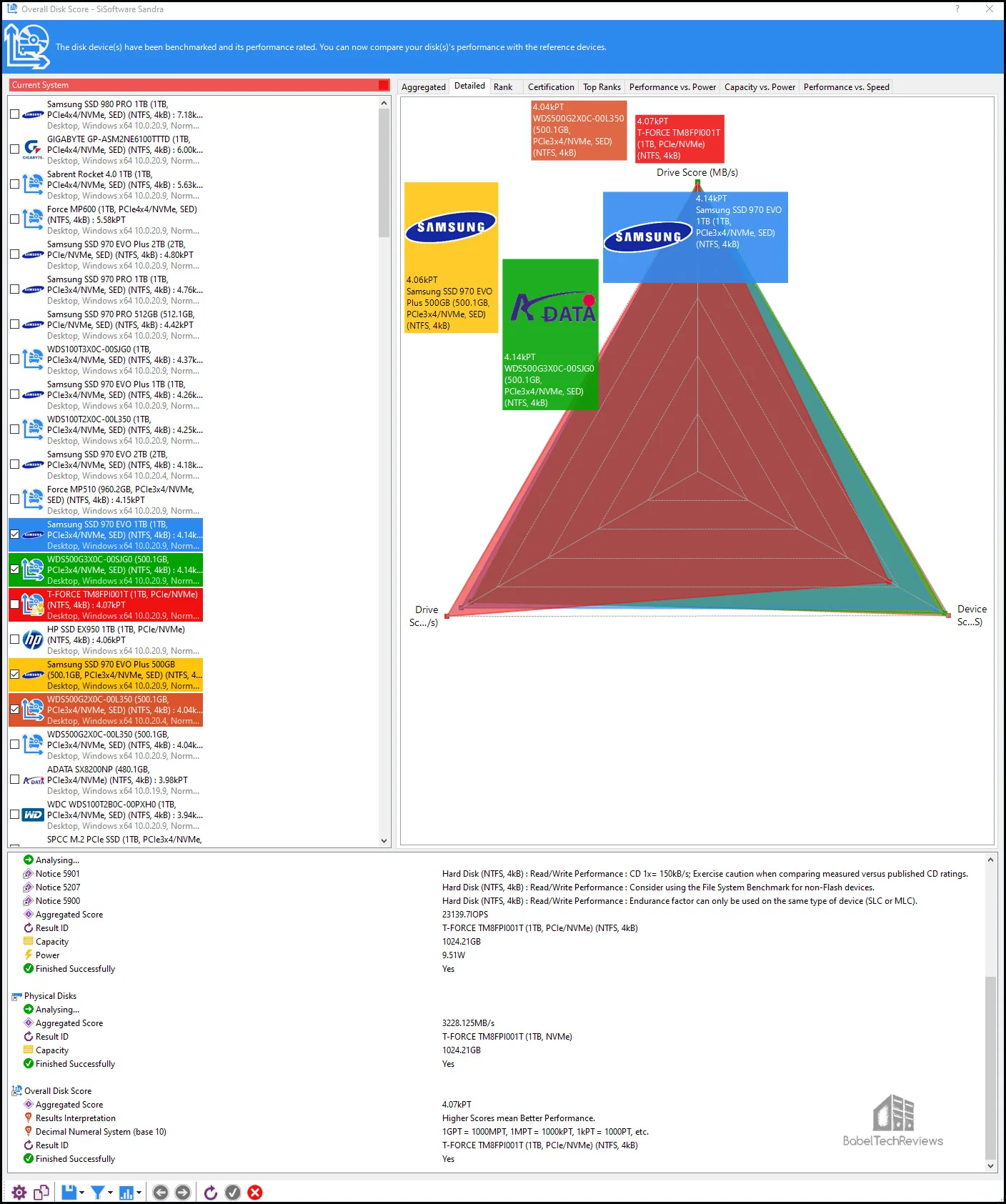T-FORCE CARDEA ZERO Z440 2TB SSD NVMe M.2 PCIe 4.0 Gen4 x4 Gaming Review
BTR recently received a 2TB T-FORCE CARDEA ZERO Z440 SSD from TeamGroup which is an older PCIe 4.0 Gen 4 x4 drive that appears to be particularly useful for motherboards with integrated NVMe heatsinks because of its thin graphene foil cooling solution. SSD (Solid State Drive) technology is continually improving and its pricing remains reasonable as speed and capacities increase for gamers who need more storage as games grow larger. 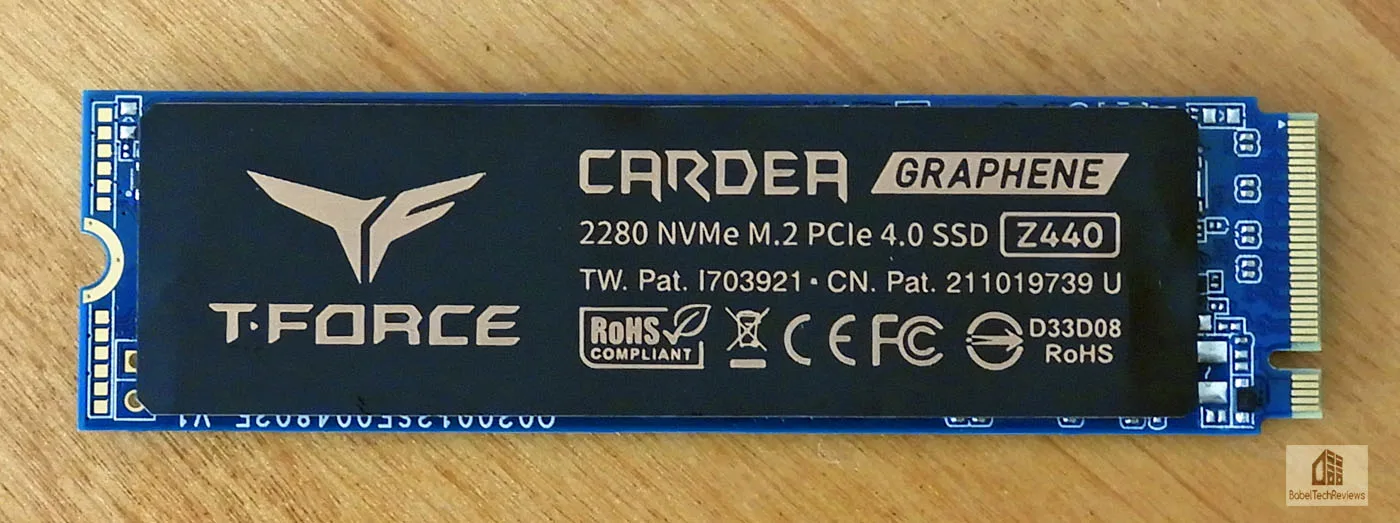 CARDEA ZERO Z440 is a fast 5,000MBps/4,400 MBps SSD that we put it through its paces against seven other SSDs. We especially want to see how it compares especially in PC gaming with our other three NVMe Gen 4 x4 SSDs – a 2TB 7,400MBps/7000MBps SSD, a 1TB 7,000MBps/6,000MBps SSD, and another 2TB 5,000 MBps/4,400 MBps SSD.
CARDEA ZERO Z440 is a fast 5,000MBps/4,400 MBps SSD that we put it through its paces against seven other SSDs. We especially want to see how it compares especially in PC gaming with our other three NVMe Gen 4 x4 SSDs – a 2TB 7,400MBps/7000MBps SSD, a 1TB 7,000MBps/6,000MBps SSD, and another 2TB 5,000 MBps/4,400 MBps SSD.
We will also focus on its performance besides comparing it with five NVMe/PCIe SSDs, a portable USB 3.2 SSD, and a fast SATA III SSD: (1) a 2TB CARDEA A440 Pro Special Series (7,400/7,000MBps Gen 4 x4), (2) a 1TB CARDEA A440 (7,000/6000MBps Gen 4 x4), (3) a 2TB CARDEA Ceramic C440 (5,000/4400MBps Gen 4 x4), (4) the 1TB CARDEA IOPS SSD (3,400/3000MBps, Gen 4 x3), (5) a now midrange TeamGroup 1TB MP33 (1,800/1,500MBps, Gen 3 x4 SSD), (6) a 4TB M200 portable USB 3.2 Type C SSD (2,000/2,000MBps), and (7) a fast 1TB Delta MAX White RGB (560MBps/510MBps) SATA III SSD.
The T-FORCE CARDEA ZERO Z440 SSD is available in 1TB and 2TB capacities, priced at Amazon at $227.99 for the 2TB version (and at $119.99 for the 1TB version). The T-FORCE CARDEA A440 Pro Special Series SSD is priced at Newegg at $287.99 for the 2TB version. The T-FORCE CARDEA A440 (vanilla) SSD is at Amazon for $299.99 for 2TB, but it comes with two heatsinks, and the 2TB CARDEA Ceramic C440 is priced at $229.99. They are all in similar price ranges to other comparable fast PCIe 4.0 Gen 4 x4 SSDs currently available.
For additional price comparisons, the TeamGroup 2TB MP33 NVMe SSD is $145.99, the T-FORCE NVMe CARDEA IOPS is $117.82 and only offered in a 1TB capacity as is the SATA III Delta MAX at Amazon for $109.99 but it offers RGB lighting. The 4TB M200 Portable USB 3.2 Gen2 x2 Type C SSD is $659.99 while the 2TB version is $267.99.
Features & Specifications
Here are the features and specifications of the T-FORCE CARDEA ZERO Z440 SSD which are taken directly from TeamGroup’s website.
Features
- M.2 NVMe PCIe Gen4 x4 solid state drive. Supports the latest platform AMD X570
- Excellent performance – Read speed is up to 5,000 MB/s[1]. Enhances the speed and performance of the overall system
- Three heat dissipation elements – the combination of graphene and copper can provide excellent heat dissipation. 0.2mm ultra-thin and patented cooling module can avoid interference during installation
- Multiple protection, smart management technology – effectively monitors the status of solid state drive and maximizes its performance
- Product warranty – five-year product warranty with free technical support service
- Taiwan Invention Patent (number: I703921)
- China Utility Patent (number: CN 211019739 U)
Specifications
 The specifications, based on CrystalDiskMark, boast up to 5,000 Read MB/s / 4,400 MB/s Write for the 2TB version and the same speeds for the 1TB version which are very good for an older Gen 4 x4 PCIe 4.0 NVMe SSD. Although it features a SLC cache that will degrade beyond its capacity threshold and isn’t capable of sustaining its write performance until full, it is exceptional for gaming and most applications. The 2TB model is rated for a solid lifespan of 3,600 terabytes written backed by a five year guarantee, and it features S.M.A.R.T and Trim support.
The specifications, based on CrystalDiskMark, boast up to 5,000 Read MB/s / 4,400 MB/s Write for the 2TB version and the same speeds for the 1TB version which are very good for an older Gen 4 x4 PCIe 4.0 NVMe SSD. Although it features a SLC cache that will degrade beyond its capacity threshold and isn’t capable of sustaining its write performance until full, it is exceptional for gaming and most applications. The 2TB model is rated for a solid lifespan of 3,600 terabytes written backed by a five year guarantee, and it features S.M.A.R.T and Trim support.
We were curious as to why TeamGroup picked the name, “Cardea“. In Greek and Roman mythology, Cardea was the ‘Goddess of the Hinge’, a family protector who kept evil spirits from entering their homes. Cardea comes from the Latin word ‘cardo’, which means hinge, pole, axis, or juncture with the same root as “cardiology”, which means connected to the heart/center. Cardo was also fundamental to Roman city planning. It appears that a SSD/storage is at the heart of a PC and essential to it.
Next we unbox the T-FORCE CARDEA ZERO Z440 SSD and take a closer look at it.
Unboxing, Heatsink installation, and Temperatures Under Load
The T-FORCE CARDEA ZERO Z440 comes in a small box that advertises PCIe 4.0 and a copper graphine heatsink as pictured on the front. 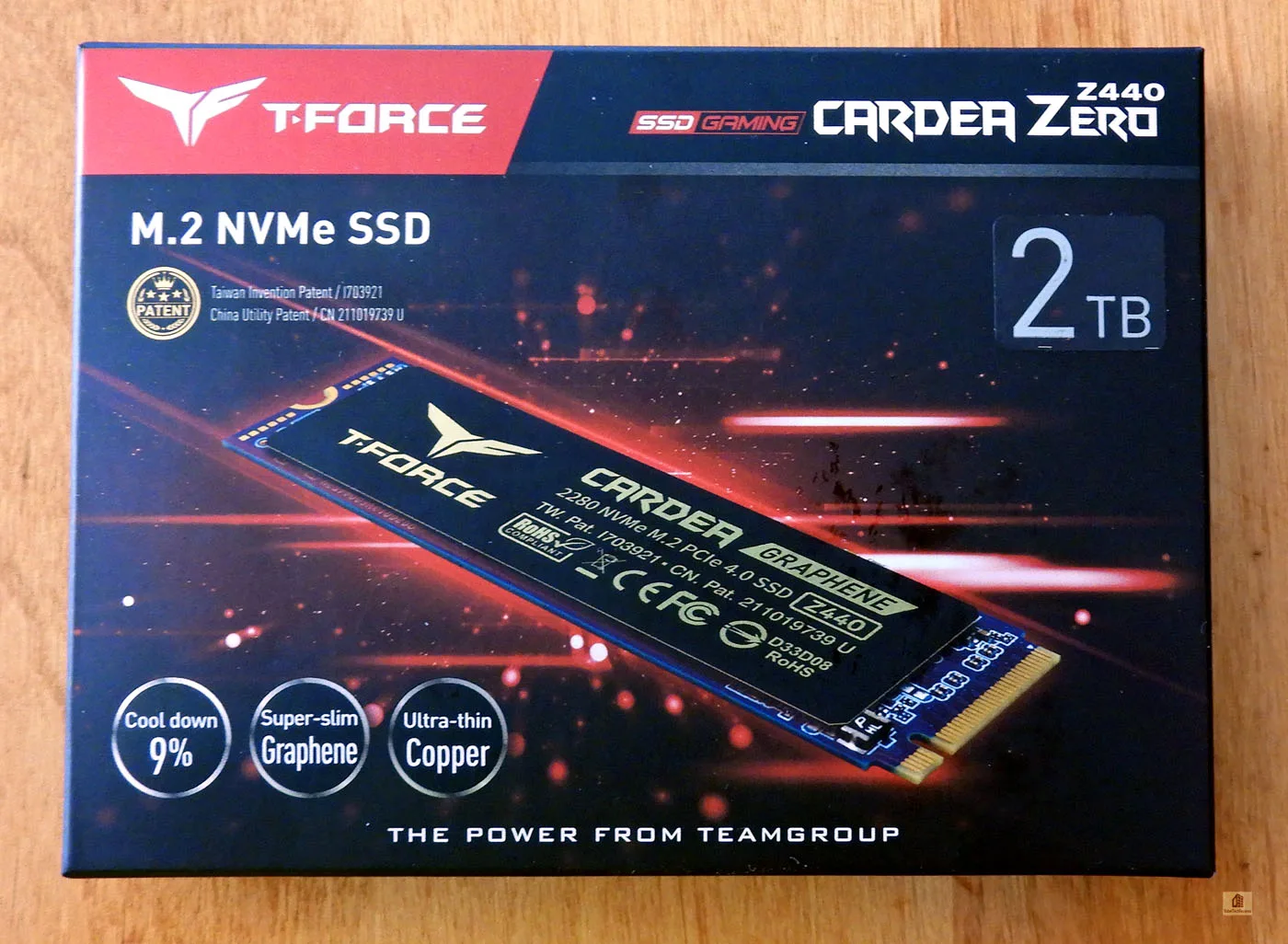 Here is the back of the box which warns the buyer that the up to 5,000 MB/s / 4,400 MB/s transfer speeds can vary according to hardware/software conditions and are only to be used for basic reference. It offers a 5-year warranty and demonstrates the heatsink – a thin copper-colored Graphene foil – that will allow the SSD to be placed behind a video card, under an integrated motherboard heatsink, or into the PS5.
Here is the back of the box which warns the buyer that the up to 5,000 MB/s / 4,400 MB/s transfer speeds can vary according to hardware/software conditions and are only to be used for basic reference. It offers a 5-year warranty and demonstrates the heatsink – a thin copper-colored Graphene foil – that will allow the SSD to be placed behind a video card, under an integrated motherboard heatsink, or into the PS5. 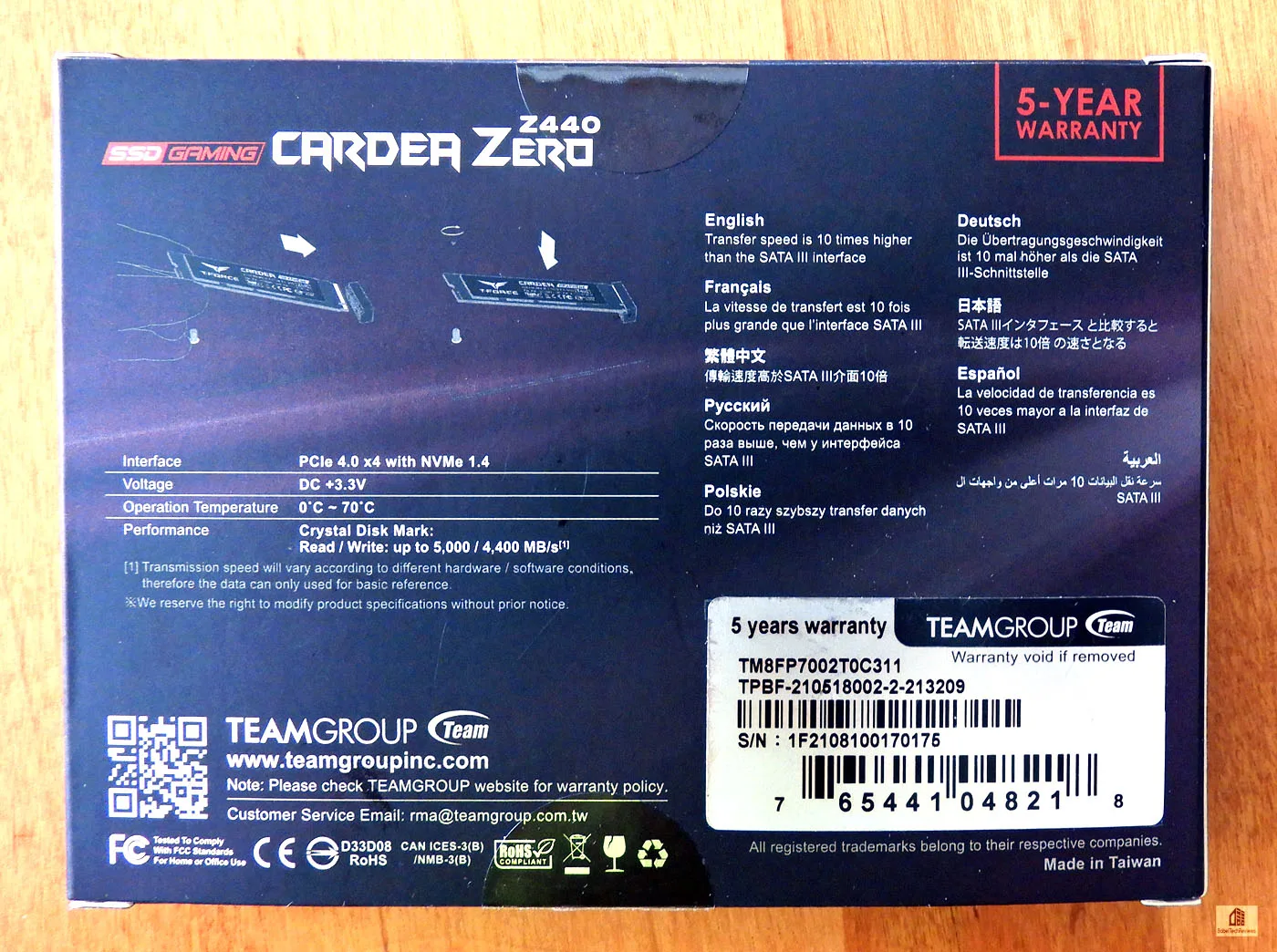 Here is a closer look at the CARDEA ZERO Z440 in its inner packaging with the heatsink on top of the NVMe SSD.
Here is a closer look at the CARDEA ZERO Z440 in its inner packaging with the heatsink on top of the NVMe SSD. 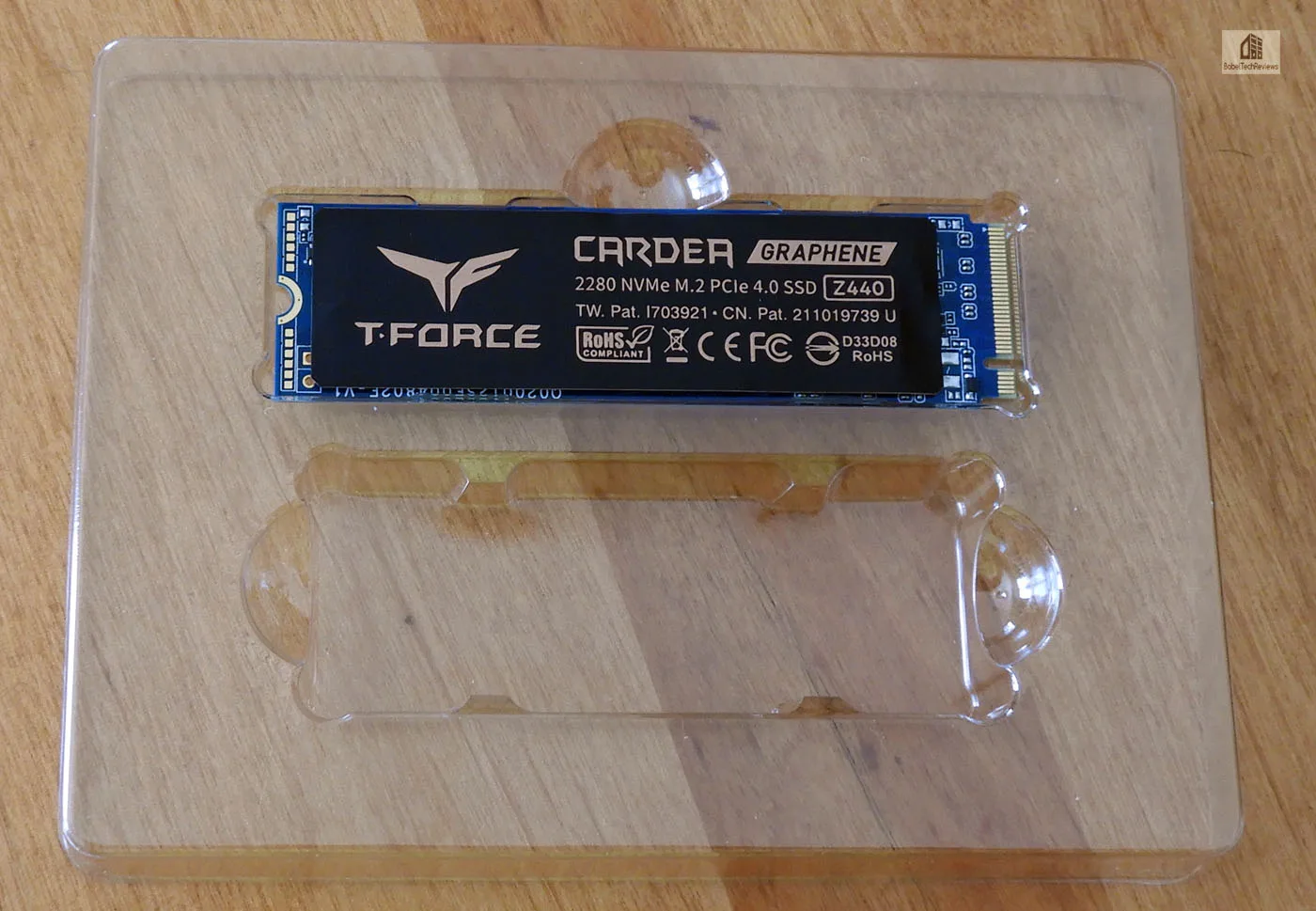 The front of the CARDEA ZERO Z440 carries a sticker which warns that the warranty may be void if removed. It’s pretty meaningless as a restriction since there are modules on both sides of the PCB.
The front of the CARDEA ZERO Z440 carries a sticker which warns that the warranty may be void if removed. It’s pretty meaningless as a restriction since there are modules on both sides of the PCB.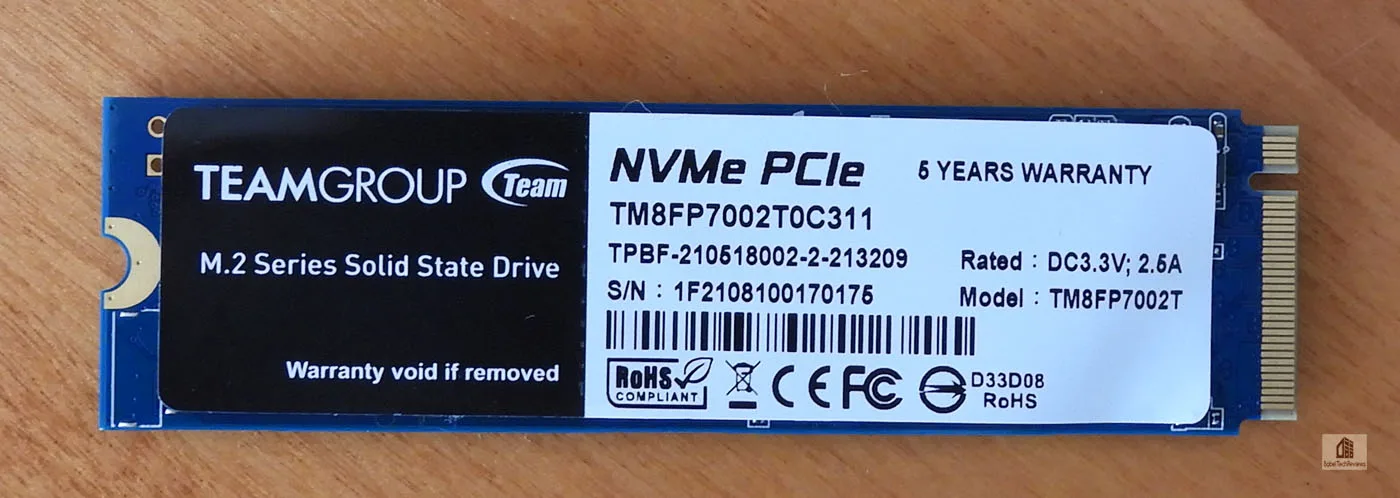
The ICs are on both sides of the PCB and the Z440 Pro uses a second-generation 96-layer 3D BiCS4 NAND manufacturing process. It uses Phison’s PS5016-E16 to achieve its rated speeds.


The CARDEA ZERO Z440 comes with just one heatsink unlike the regular A440 which comes with a second finned heatsink. The graphene heatsink is covered with a lot of unnecessary text, but it is designed to be thin and hidden behind a video card. It is also ideal for installation in a PlayStation 5.
The graphene heatsink is good-looking and easily attaches to the SSD. Installing the heatsink is simple; remove the plastic covering from the sticky thermal interface material and apply it to the heatsink taking care to cover all the modules.  It is important to use a heatsink as temperatures will easily exceed 80C without one. But using the graphene heatsink behind a video card only drops temperatures by about 5C. Stressing the ZERO Z440 by copying 100GB over and over resulted in temps of 80C. The ZERO Z440 is as difficult to cool as CARDEA Ceramic C440 (5,000MBps/4400MBps) which also has ICs on both sides of its PCB and which also runs too hot to be cooled by its supplied graphene heatsink. A ceramic heatsink would have been a better choice.
It is important to use a heatsink as temperatures will easily exceed 80C without one. But using the graphene heatsink behind a video card only drops temperatures by about 5C. Stressing the ZERO Z440 by copying 100GB over and over resulted in temps of 80C. The ZERO Z440 is as difficult to cool as CARDEA Ceramic C440 (5,000MBps/4400MBps) which also has ICs on both sides of its PCB and which also runs too hot to be cooled by its supplied graphene heatsink. A ceramic heatsink would have been a better choice.

We measured the temperatures using Crystal Disk Info and Hardware Info 64 which were in agreement, and the SSD became much too hot to touch. In fact, we saw significant loss of performance as the SSD throttled its speeds in an attempt to cool down. We also tested the CARDEA ZERO Z440 with the finned heatsink the A440 came with, and temperatures stayed well below 70C under the most demanding conditions without throttling.
Just as with the CARDEA A440 Special Series, we didn’t know why TeamGroup decided not to include an additional heatsink with the regular A440 but not with the ZERO Z440, so we let them know that we found the graphene heatsink inadequate. They replied (regarding the A440 Special Series which also applies to the Z440):
“We suggest that you use the NVMe heatsink that comes with ASUS ROG Maximus Apex motherboard, and also please suggest users do it this way also.
The CARDEA A440 Pro Special Series SSD is originally designed within the PS5 environment, so when it comes with higher data transfers, the temperature will go higher than expected.”

So the Z440 should be fine with a PS5 but not with a PC. If your motherboard has an integrated NVMe heatsink, you will want to use it. If not, buy an aftermarket NVMe heatsink if you are doing intensive SSD work. They should install easily over the ZERO Z440’s graphene heatsink to keep it cool and it will never throttle due to heat.  Using the massive NVMe heatsink included with the ASUS ROG Maximus Apex motherboard (above), we never saw temperatures rise above 50C. After installing the CARDEA ZERO Z440, the user may need to format it before use. If you are planning to clone it, make sure both disks are GUID or convert one of them first. Lets look at our test configuration next.
Using the massive NVMe heatsink included with the ASUS ROG Maximus Apex motherboard (above), we never saw temperatures rise above 50C. After installing the CARDEA ZERO Z440, the user may need to format it before use. If you are planning to clone it, make sure both disks are GUID or convert one of them first. Lets look at our test configuration next.
Test Configuration – Hardware
- Intel Core i9-12900KF (HyperThreading and Turbo boost at stock settings)..
- ASUS ROG Maximus Z690 Apex LGA 1700 motherboard (Intel Z690 chipset, latest BIOS, PCIe 5.0, DDR5)
- T-FORCE DELTA RGB PC5-51200 6400MHz DDR5 CL40 2x16GB kit, supplied by TeamGroup
- GeForce RTX 3080 Ti, supplied by NVIDIA
- T-FORCE T-FORCE CARDEA ZERO Z440 2TB M.2 NVMe PCIe 4.0 SSD, supplied by TeamGroup
- T-FORCE CARDEA A440 Pro Special Series 2TB M.2 NVMe PCIe 4.0 SSD, supplied by TeamGroup
- T-FORCE CARDEA A440 1TB M.2 NVMe PCIe 4.0 SSD, supplied by TeamGroup
- T-FORCE CARDEA Ceramic C440 2TB PCIe Gen 4 x4 NVMe SSD
- T-FORCE CARDEA IOPS 1TB PCIe Gen 4 x3 NVMe SSD, supplied by TeamGroup
- TeamGroup MP33 1TB NVMe Gen 3 x4 PCIe SSD
- T-FORCE M200 4TB Portable Gen 2 x2 USB 3.2 Type C SSD, supplied by TeamGroup
- T-FORCE DELTA MAX White 1TB SATA III SSD, supplied by TeamGroup
- Super Flower LedEx, 1200W Platinum 80+ power supply unit
- MSI MAG Series CORELIQUID 360R (AIO) 360mm liquid CPU cooler
- Corsair 5000D ATX mid-tower (plus 1 x 140mm fan; 2 x 120mm Noctua fans)
- BenQ EW3270U 32? 4K HDR 60Hz FreeSync monitor
Test Configuration – Software
- Gaming results show loading time in seconds and lower is better
- Windows 11 Professional edition; latest updates/build
- Latest DirectX
- All benchmarking programs are updated to their latest versions
- IOmeter
PC Game & Level Loading Suite
- PCMark 8 (World of Warcraft & Battlefield 3)
- Final Fantasy XIV: Shadowbringers Benchmark – loading times of five different levels
- Final Fantasy XIV: Endwalker Benchmark – loading times of five different levels
- 3DMark Storage Benchmark (Battlefield V, Call of Duty, Overwatch)
Synthetic Benching Tests & Suites
- SiSoft Sandra 2020/2021
- AIDA64
- PCMark 10 Pro version courtesy of UL (Full Storage Benchmark, Express, Extended)
- PCMark 8
- SPECworkstation3 (3.0.4) Benchmarks
- Anvil’s Storage Utilities
- CrystalDiskMark
- TxBENCH Basic
- HD Tune
- AS SSD
- HD Tach
- 100GB File Copy Timed Test
Let’s head to our benching results.
Benchmarking the CARDEA ZERO Z440 SSD
Benchmarking SSDs is not an exact science as there is variability between runs, and different benchmarks may show different results depending on how they run their tests and how up-to-date the benchmarks are. However, by using enough real world and synthetic tests, it may be possible to get a good idea of the relative performance across all eight tested drives. For benchmark results, the drives are listed in the following order on the charts:
- T-FORCE CARDEA ZERO Z440 2TB M.2 NVMe PCIe 4.0 Gen 4 x4 SSD
- T-FORCE CARDEA A440 Pro Special Series 2TB M.2 NVMe PCIe 4.0 Gen 4 x4 SSD
- T-FORCE CARDEA A440 1TB M.2 NVMe PCIe 4.0 Gen 4 x4 SSD
- T-FORCE CARDEA Ceramic C440 1TB PCIe 4.0 Gen 4 x4 NVMe SSD
- T-FORCE CARDEA IOPS 1TB PCIe Gen 3 x4 NVMe SSD
- TeamGroup MP33 1TB NVMe Gen 3 x4 PCIe SSD
- T-FORCE M200 4TB Portable Gen 2 x2 USB 3.2 Type C SSD
- T-FORCE Delta MAX SATA III 1TB SSD
We did not set up Windows on the Delta MAX SSD, so not all of the benchmarks could be run on it. All of the drives will have their results summarized by multiple charts although we will only show the details for the PCIe 4.0 Gen 4 x4 SSDs. Let’s start first with 3DMark’s storage benchmark.
3DMark Storage Benchmark
3DMark’s Professional version by UL includes a Storage Benchmark (optional in the Advanced version) which also measures the time it takes to load several popular games. We are only to show the Gen 4 x4 SSD detailed results but will summarize all of them.
First, the ZERO 440 results with 2606. Next, the A440 Pro Special Series results with 3229.
Next, the A440 Pro Special Series results with 3229. 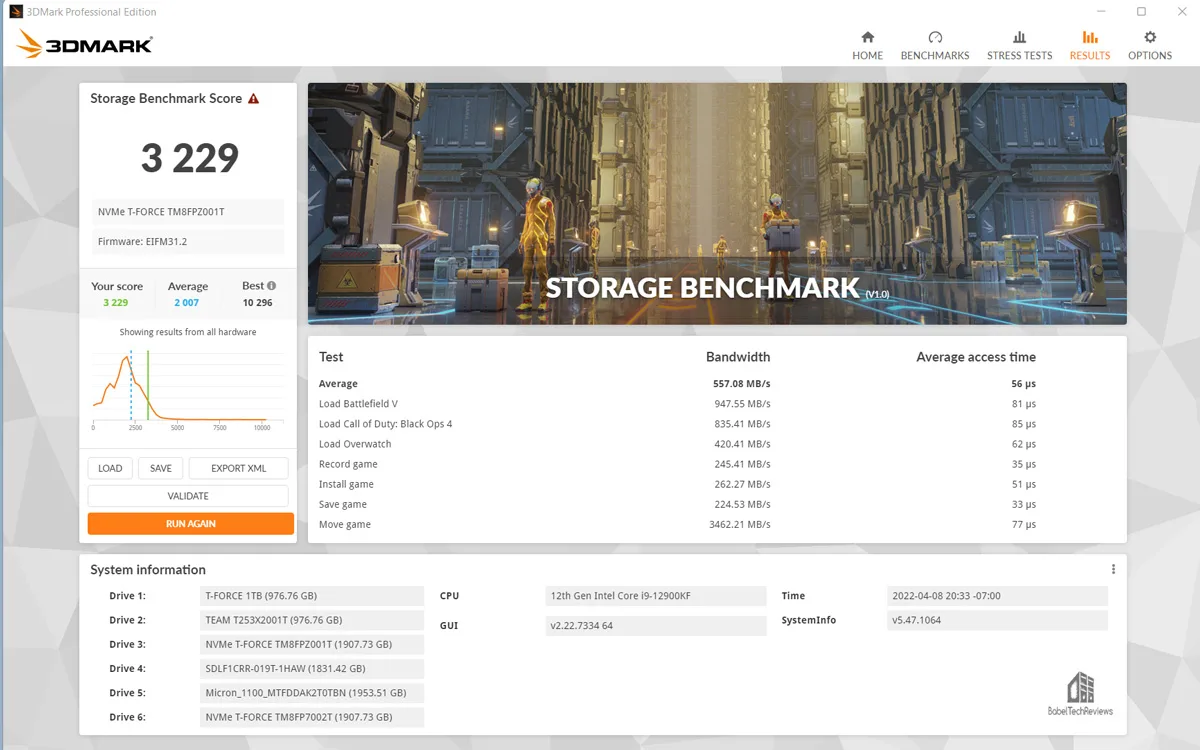 Now, the CARDEA A440 results with 3844.
Now, the CARDEA A440 results with 3844.  Finally, the CARDEA Ceramic C440 scores 3009.
Finally, the CARDEA Ceramic C440 scores 3009.  Here’s the summary chart of all eight of our tested drives.
Here’s the summary chart of all eight of our tested drives.

The ZERO Z440 is the slowest of the PCIe 4.0 Gen 4 x5 SSDs. The CARDEA A440 is a standout as the fastest SSD using this benchmark, followed by the A440 Pro Special Series, the C440, the Z440, the IOPS, the MP33, the portable Type C SSD, and the SATA III DELTA MAX.
Next up, another important UL benchmark suite, PCMark 10 including the full benching suites – Express, Extended, and the Full System Drive Benchmark.
PCMark 10 Professional
UL (formerly Futuremark) has been a developer and publisher of PC benchmark applications for nearly two decades. Although PCMark benches are synthetic suites, they provide a good measure of system performance. PCMark 10 was primarily developed for Windows 10 and it builds upon the PCMark 8 suite for a package of vendor-neutral home and office benchmarks.
The regular version of PCMark 10 misses several key elements such as detailed storage testing, but the Professional version, which we use courtesy of UL, includes a storage benchmark and a full system drive benchmark. In addition, We use both PCMark 10’s Express and Extended suite. First up is the Full System Drive Benchmark.
Full System Drive Benchmark
The CARDEA ZERO Z440 scores 2162.
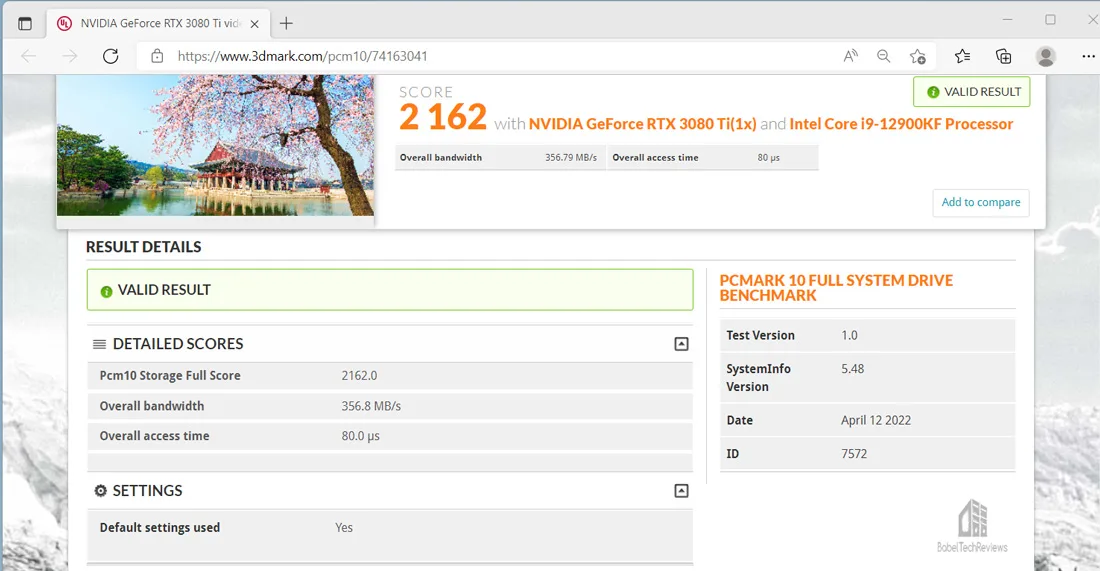
Here’s the summary chart of all of our tested drives.  The CARDEA ZERO Z440 is the slowest of the PCIe 4.0 drives but well ahead of the PCIe 3.0 drives. On to PCMark 10.
The CARDEA ZERO Z440 is the slowest of the PCIe 4.0 drives but well ahead of the PCIe 3.0 drives. On to PCMark 10.
PCMark 10 Express
First the CARDEA ZERO Z440 scores 7324.

Now the ZERO Z440 online validated score which gives more detailed results.
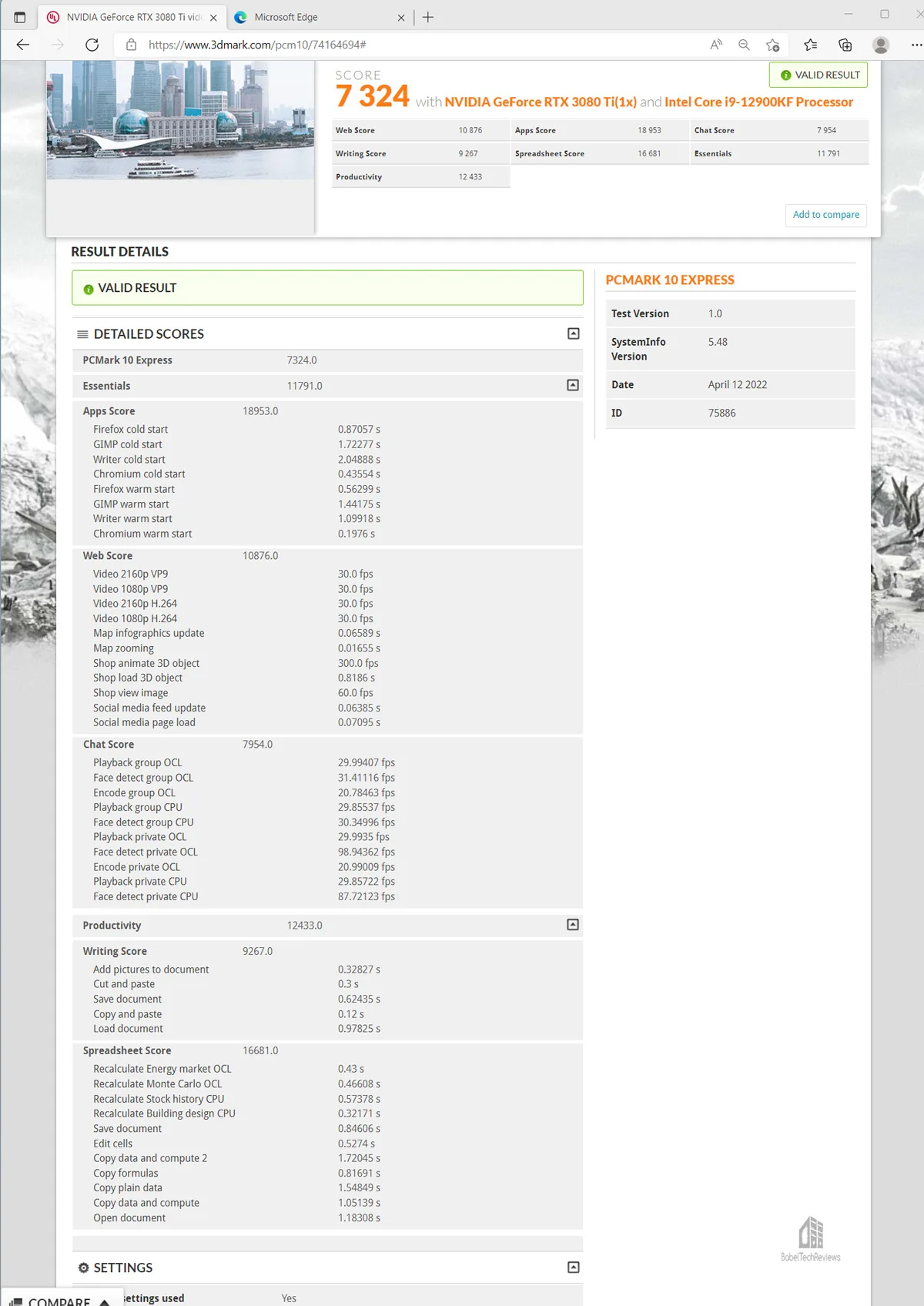
Next, the A440 Pro Special Series results with 7468. 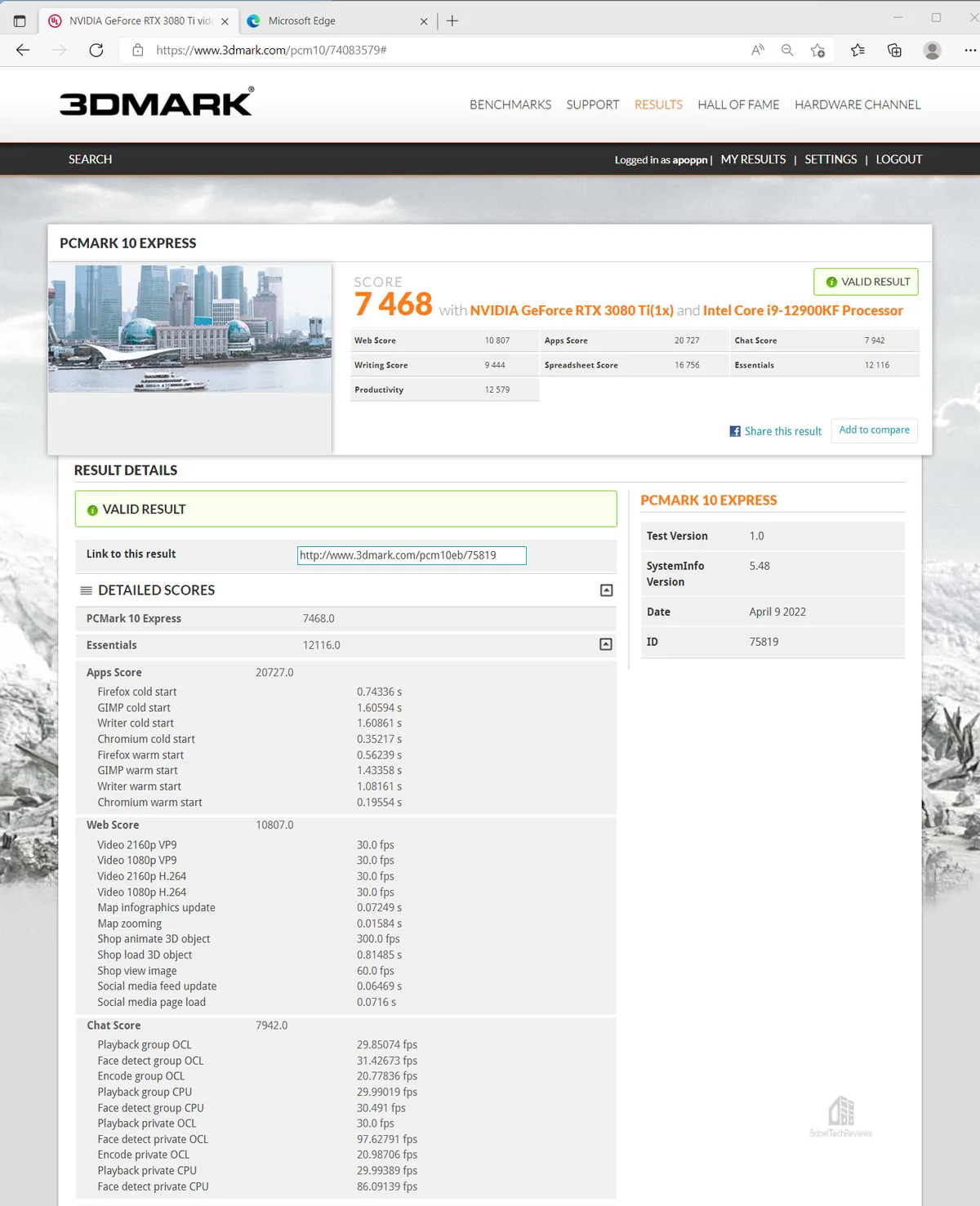
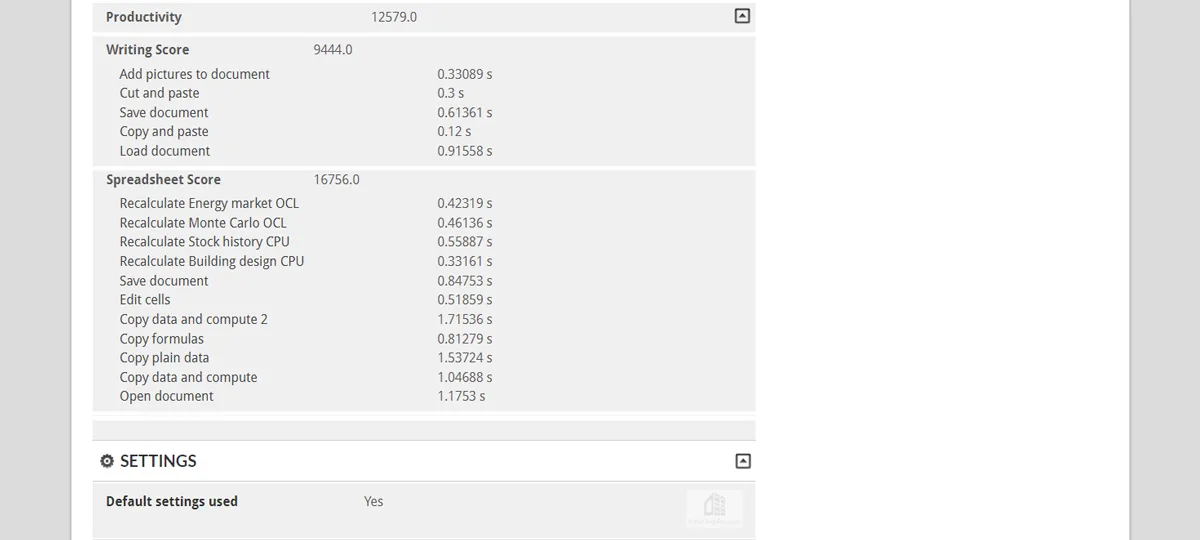 Below is the CARDEA A440 Express score with 7480.
Below is the CARDEA A440 Express score with 7480. 
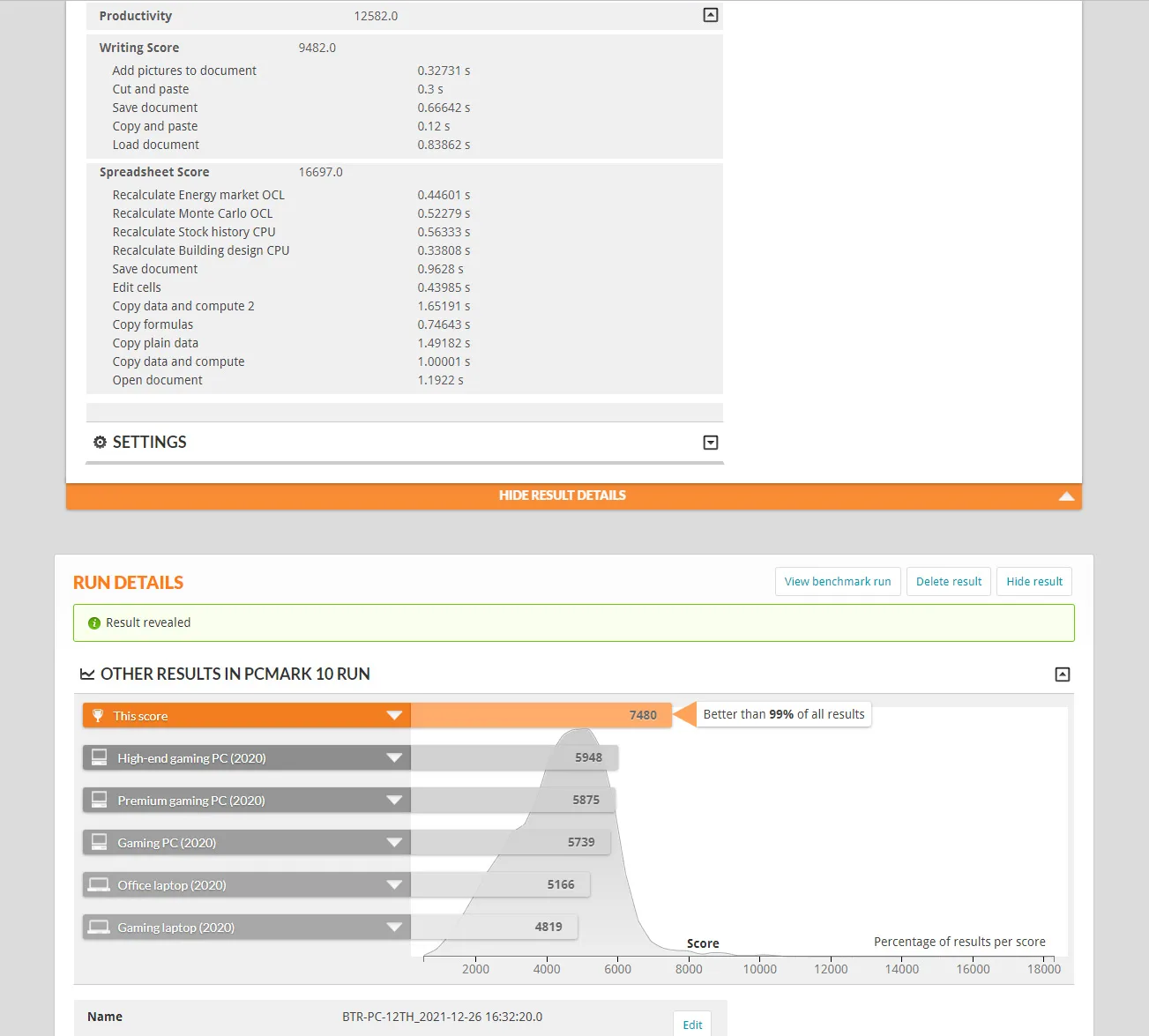 Finally, the CARDEA Ceramic C440 Express score is 7188.
Finally, the CARDEA Ceramic C440 Express score is 7188.
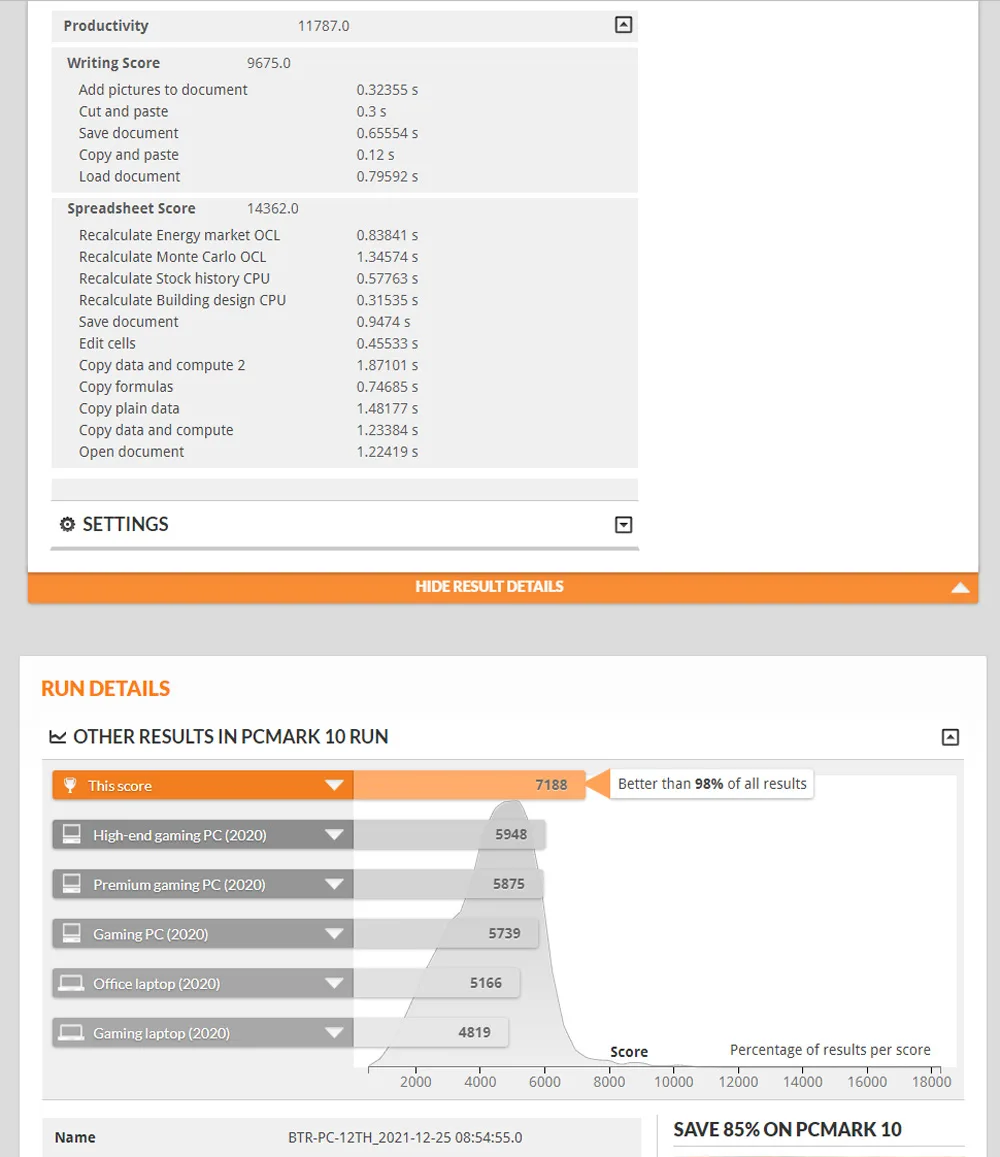 The summary chart is presented after the Extended scores.
The summary chart is presented after the Extended scores.
PCMark 10 Extended
First up, the CARDEA ZERO Z440 Extended score is 13154.
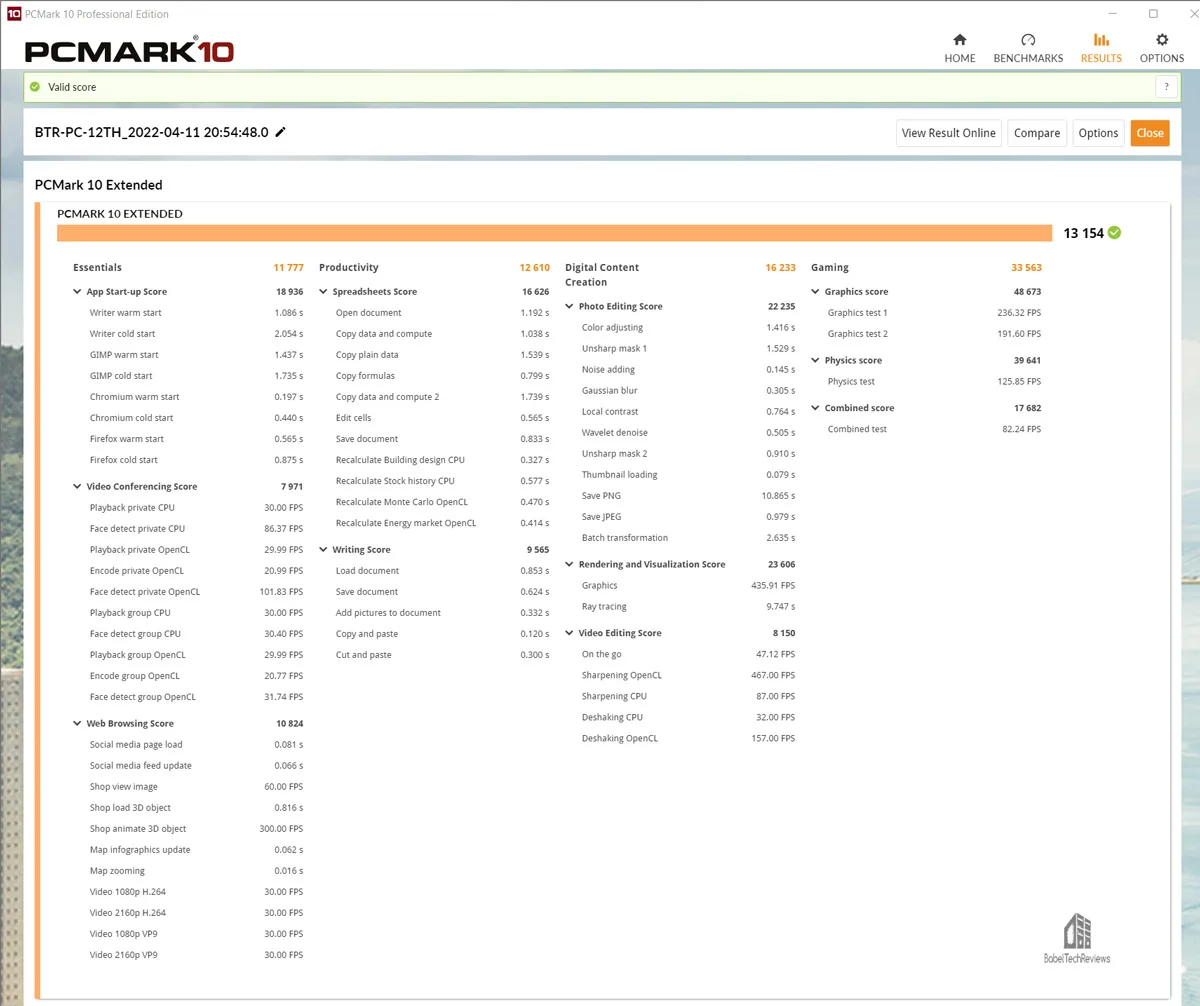
Next, the ZERO Z440 online results.
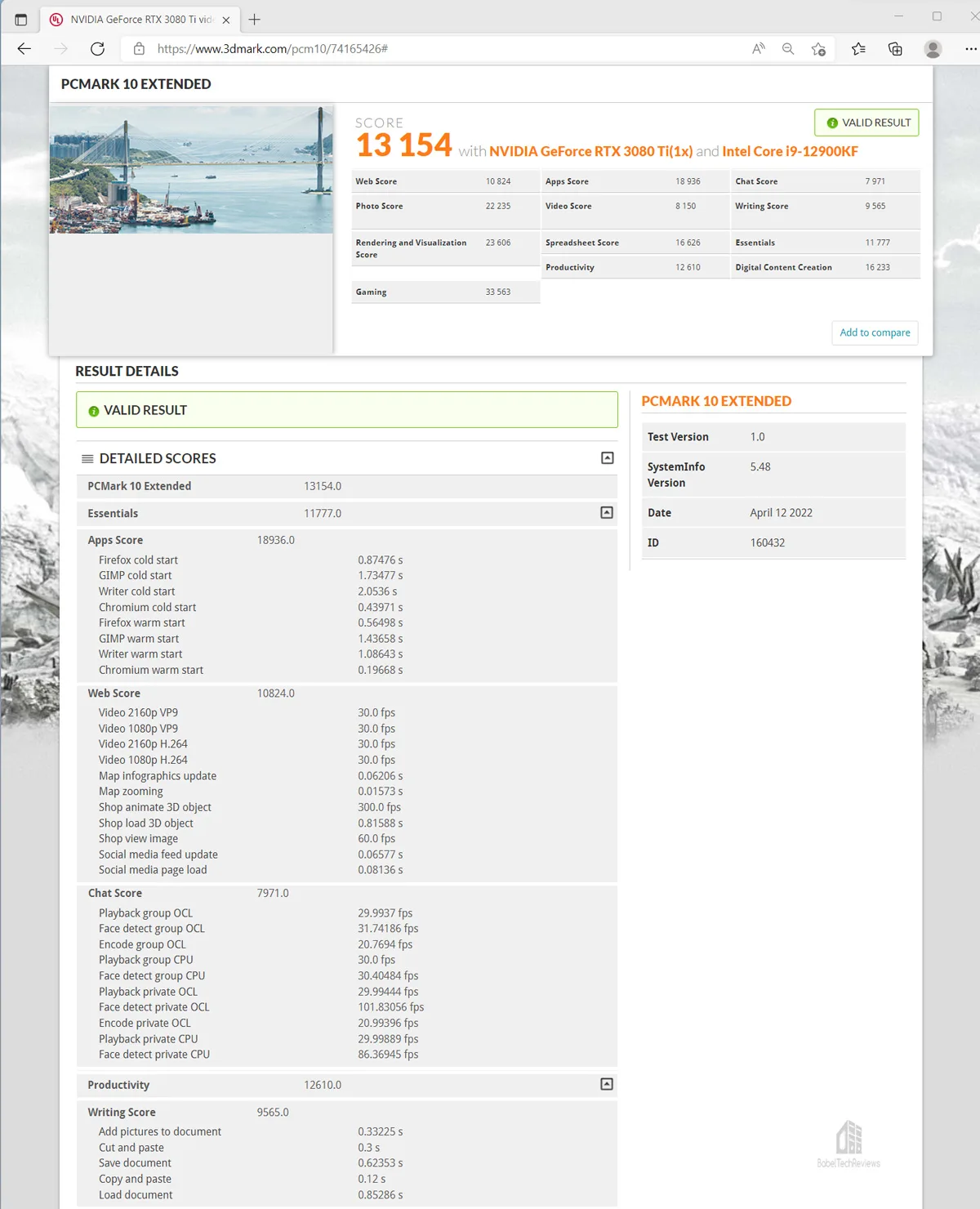
 The CARDEA A440 Pro Special Series Extended scores 13257.
The CARDEA A440 Pro Special Series Extended scores 13257.
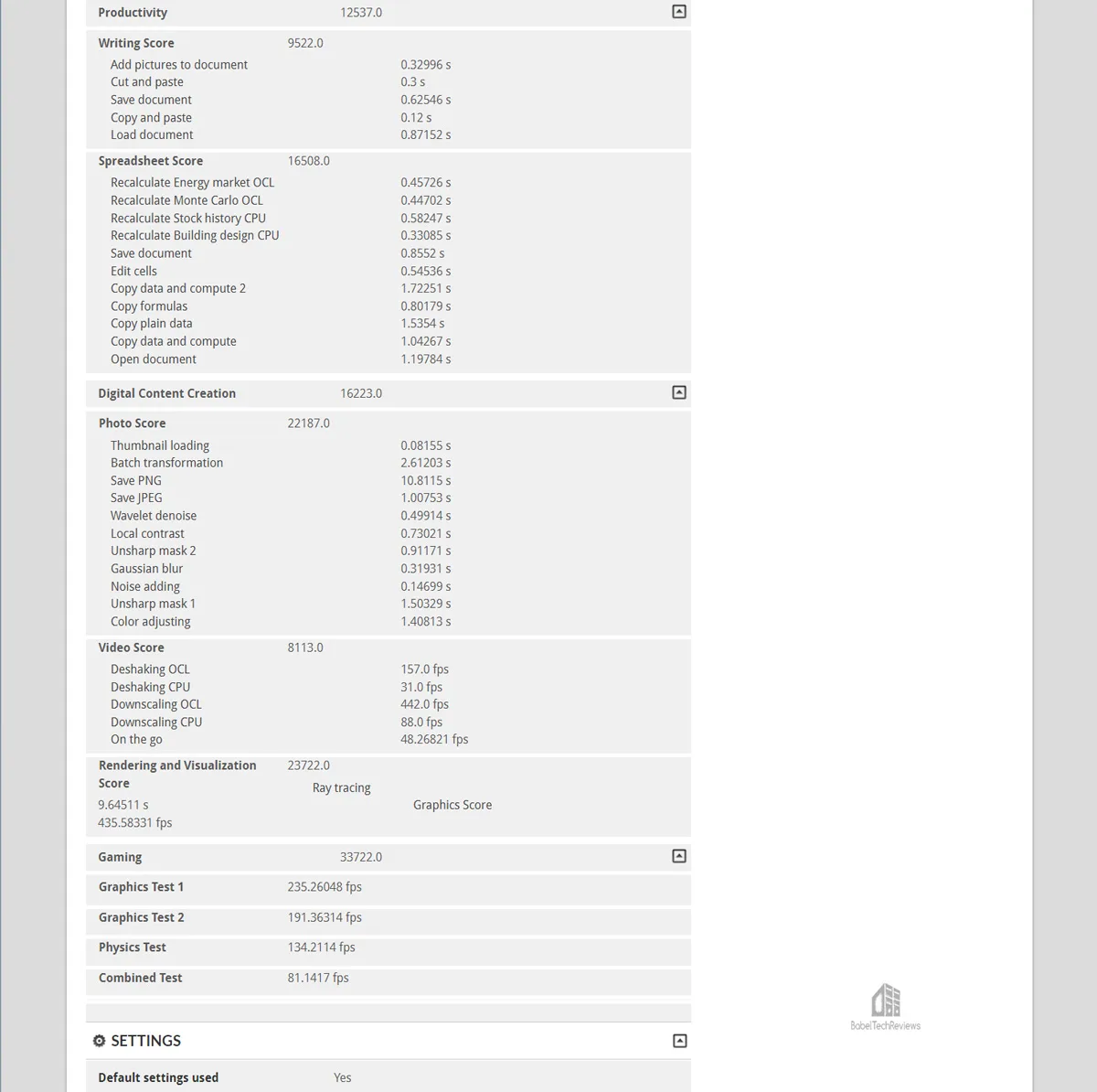 Next, the CARDEA A440 Extended score is 13452.
Next, the CARDEA A440 Extended score is 13452.
 The CARDEA Ceramic C440 Extended score is 13384.
The CARDEA Ceramic C440 Extended score is 13384.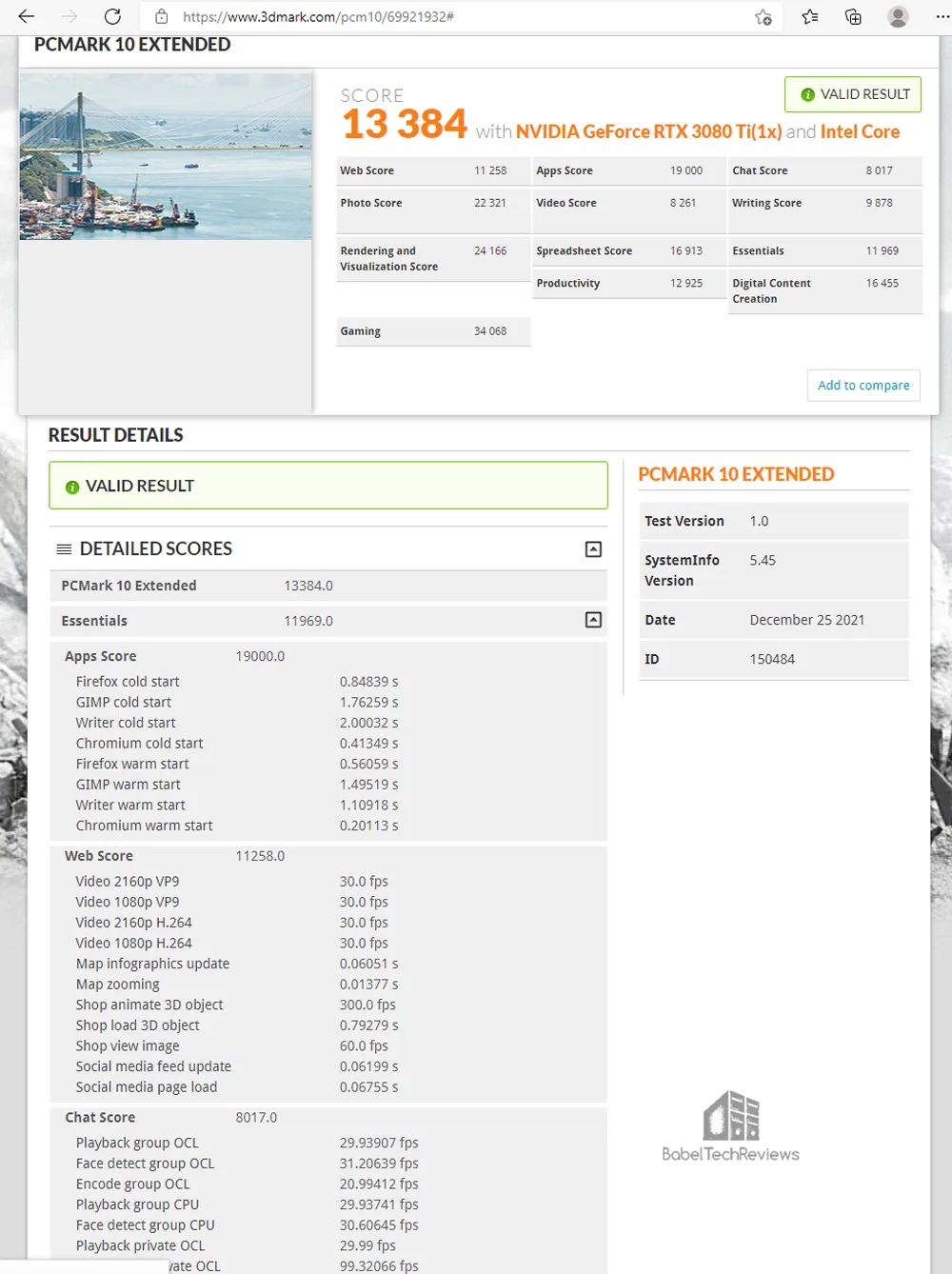
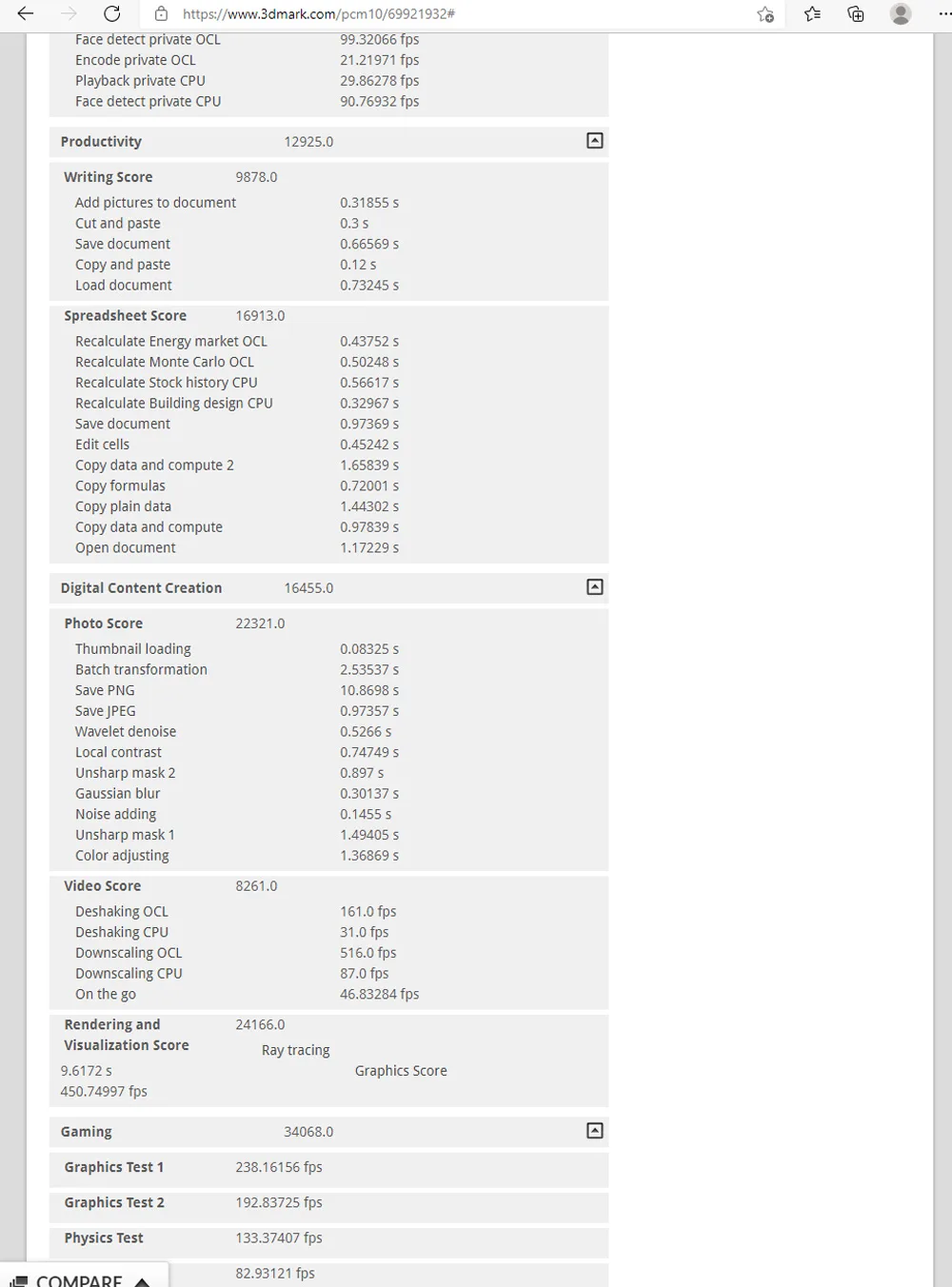 Here’s the summary chart.
Here’s the summary chart.

The Delta MAX SATA III SSD could not be tested since Windows is not set up on it. In the Express suite, the A440’s score generally the fastest while the CARDEA ZERO Z440 scores above the CARDEA C440 but is behind the PCIe 3.0 Gen 3 x4 SSDs in the more demanding Extended suite.
Let’s check out the older PCMark 8 benchmark suite which also uses dedicated storage tests.
PCMARK 8
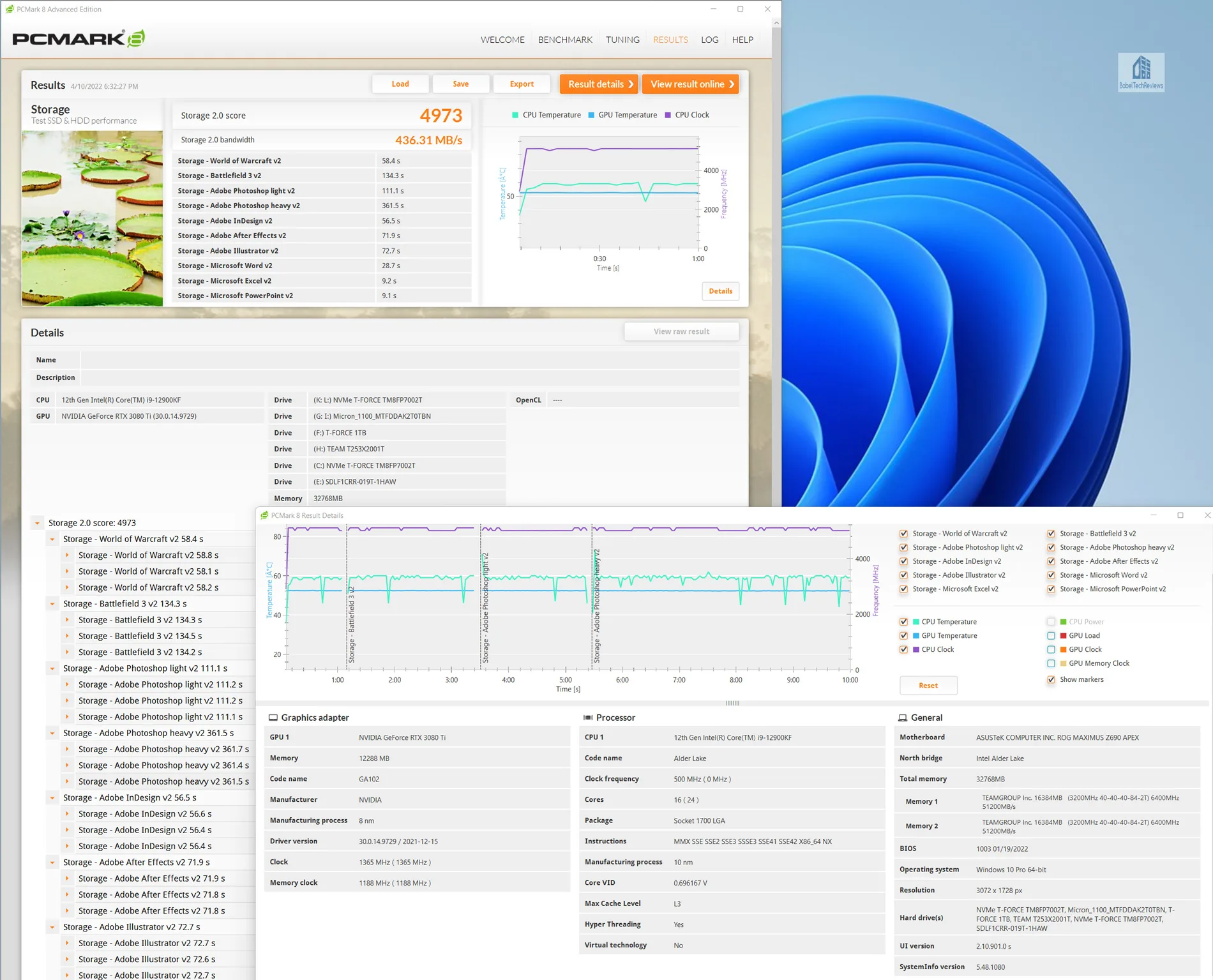


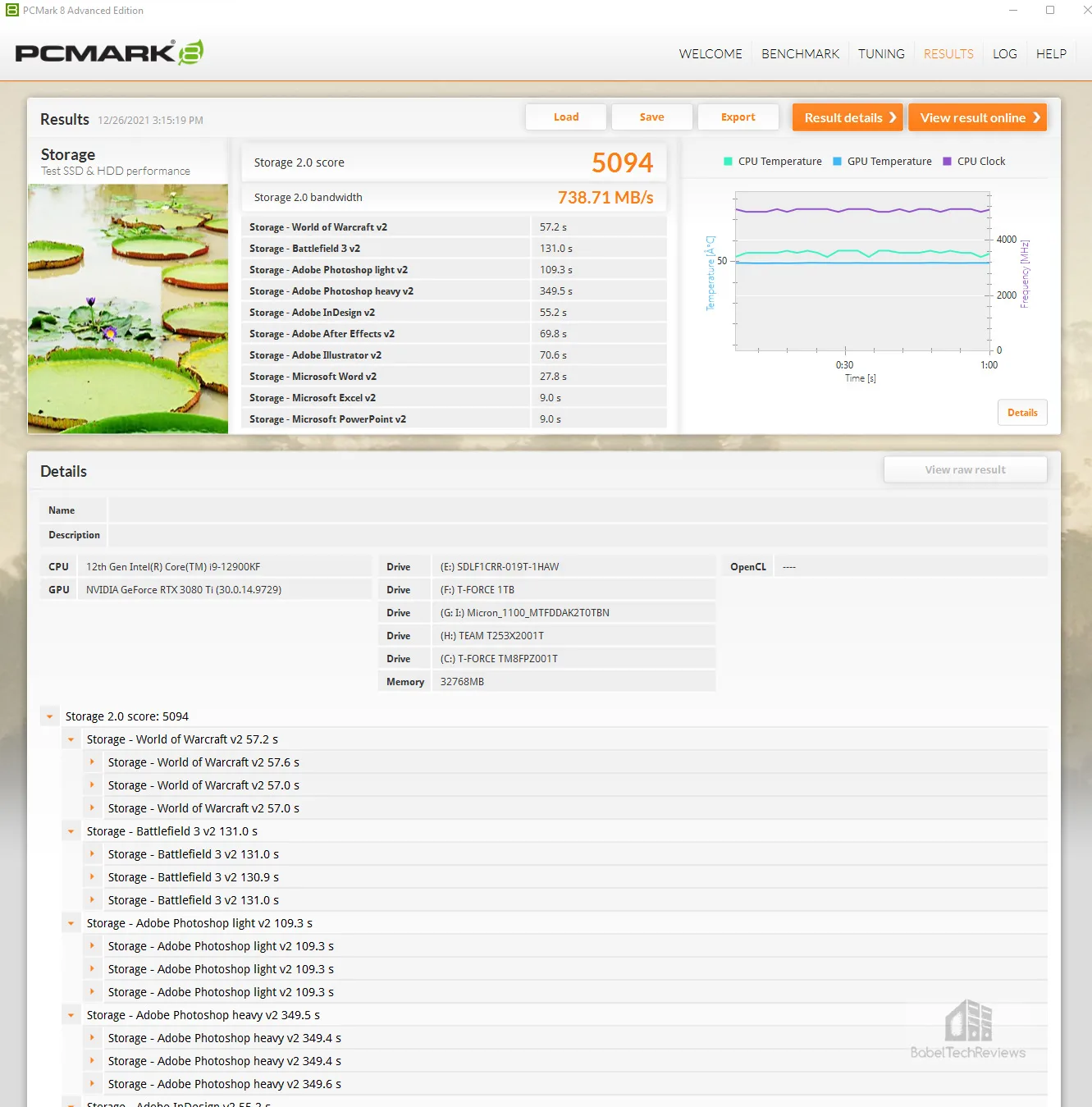
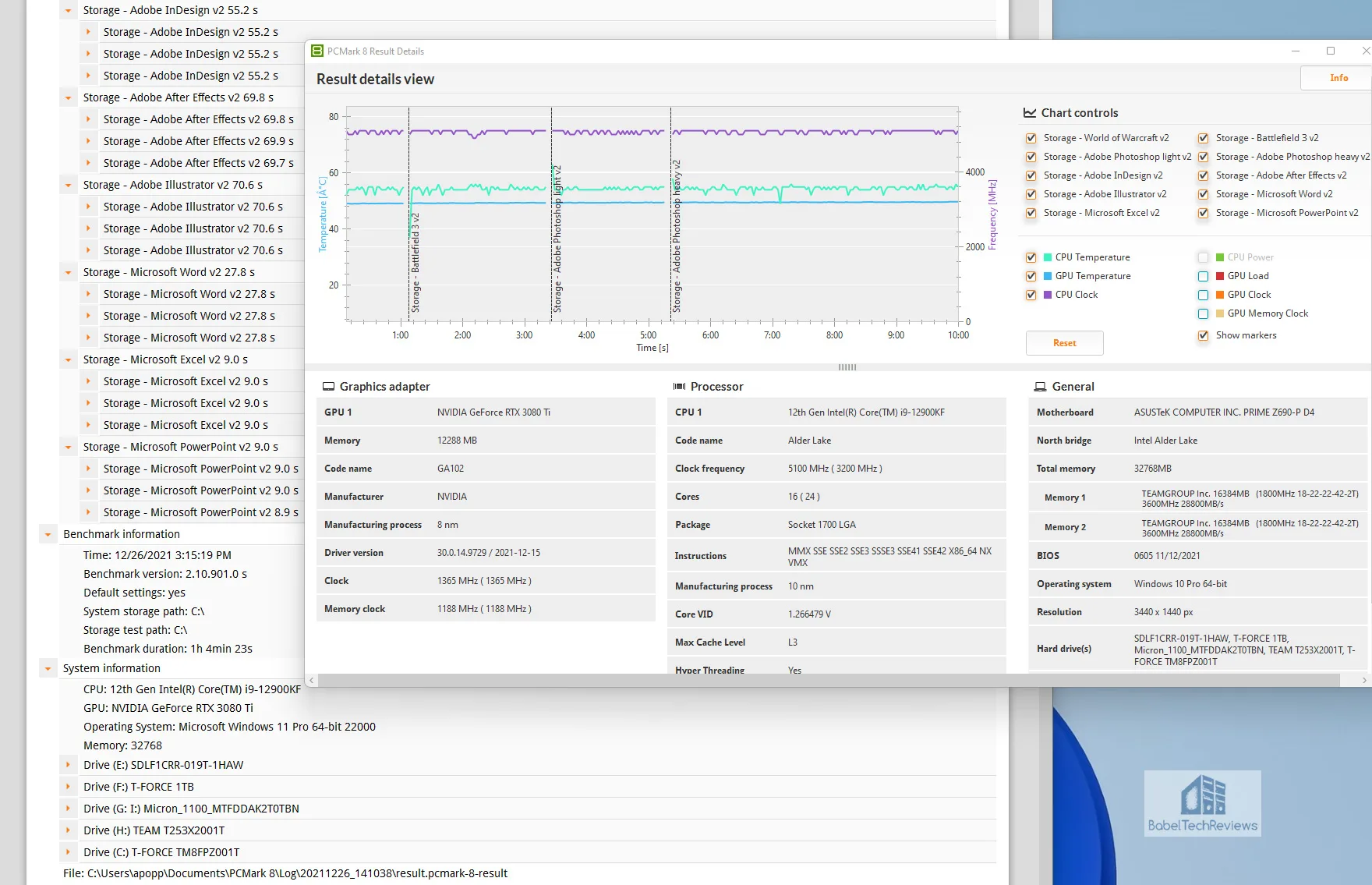
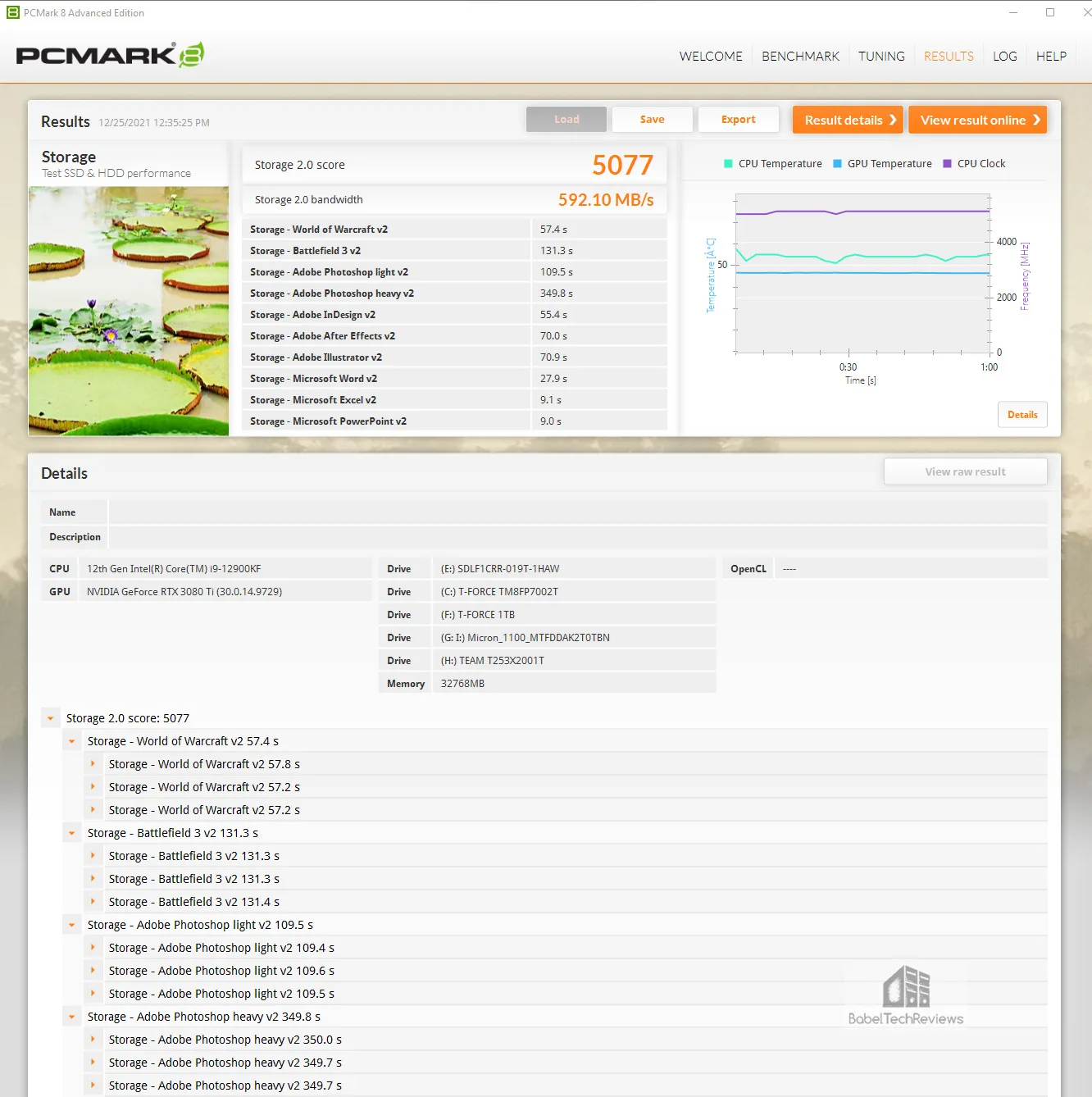



SiSoft Sandra 2020/2021
To see exactly where drive performance results differ, there is no better tool than SiSoft’s Sandra 2020. Sandra (the System ANalyser, Diagnostic and Reporting Assistant) is a complete information & diagnostic utility in one package. It is able to provide all of the information about your hardware, software, and other devices for diagnosis and for benchmarking.

AIDA64 v6.32
AIDA64 is the successor to Everest and it is an important industry tool for benchmarkers. AIDA64’s benchmark code is written in Assembly language, and they are well-optimized for AMD, Intel and VIA processors by utilizing the appropriate instruction set extensions. We use the Engineer’s version of AIDA64 courtesy of FinalWire. AIDA64 is free to to try and use for 30 days.
- The Linear Read test measure sequential performance by reading or writing all sectors without skipping any. It’s a linear view of the drives overall performance from its beginning to end.
- The Random Read test measures the random performance by reading variable-sized data blocks at random locations on the drive and they are combination of both speed and access times as its position changes before each new operation.
- The Buffered Read test measures the drive caching.
- The Access time tests are designed to measure the data access performance by reading 0.5 KB data blocks at random drive locations

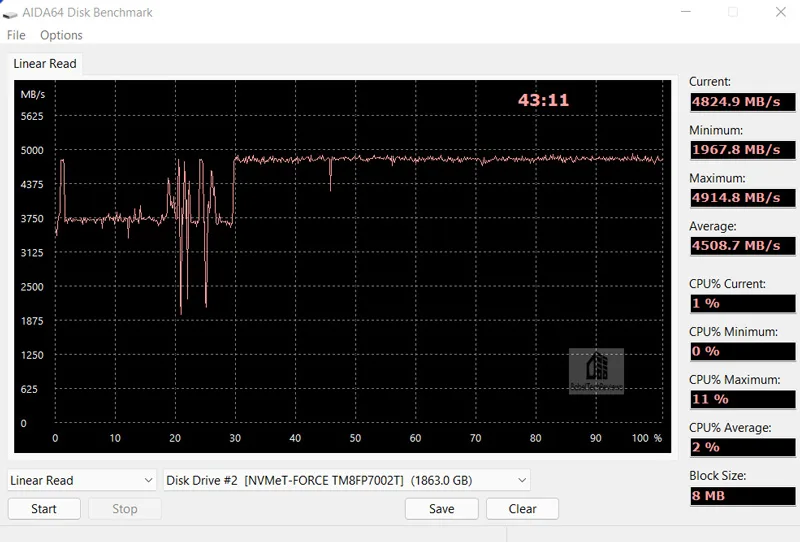
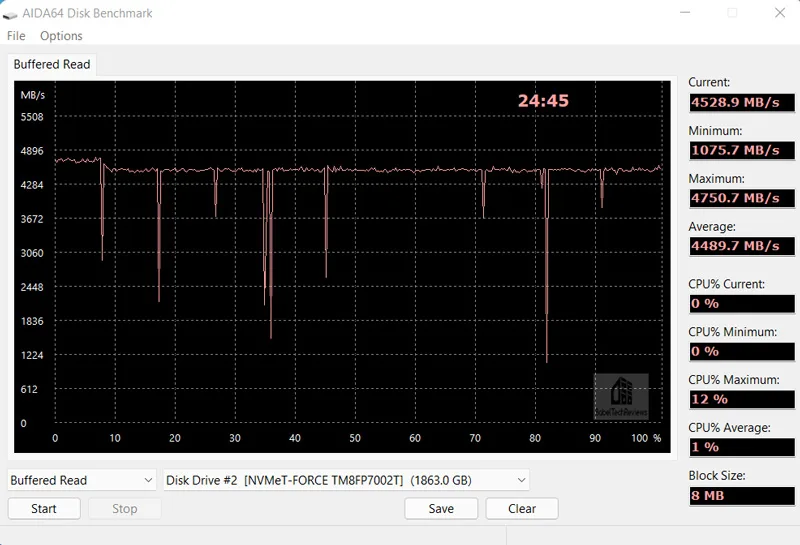
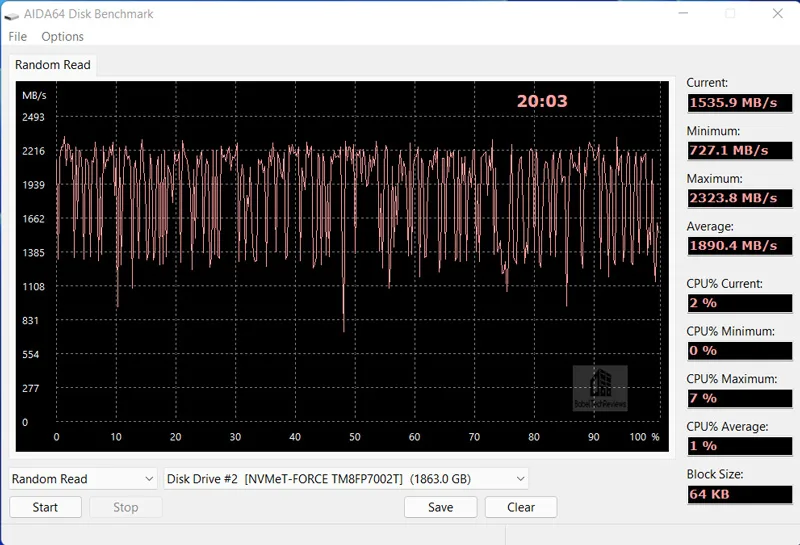
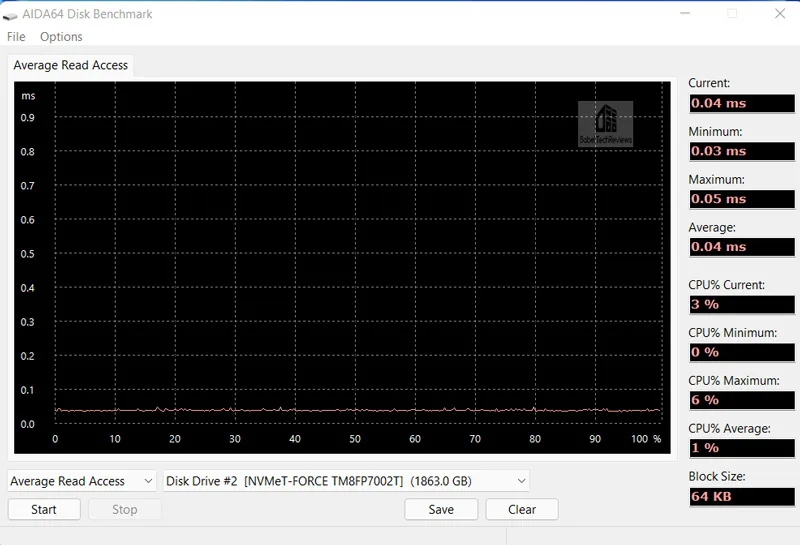

SPECworkstation3 (3.0.4) Storage Benchmarks
All the SPECworkstation3 benchmarks are based on professional applications, most of which are in the CAD/CAM or media and entertainment fields. All of these benchmarks are free except to vendors of computer-related products and/or services. The most comprehensive workstation benchmark is SPECworkstation3. It’s a free-standing benchmark which does not require ancillary software. It measures GPU, CPU, storage and all other major aspects of workstation performance based on actual applications and representative workloads.

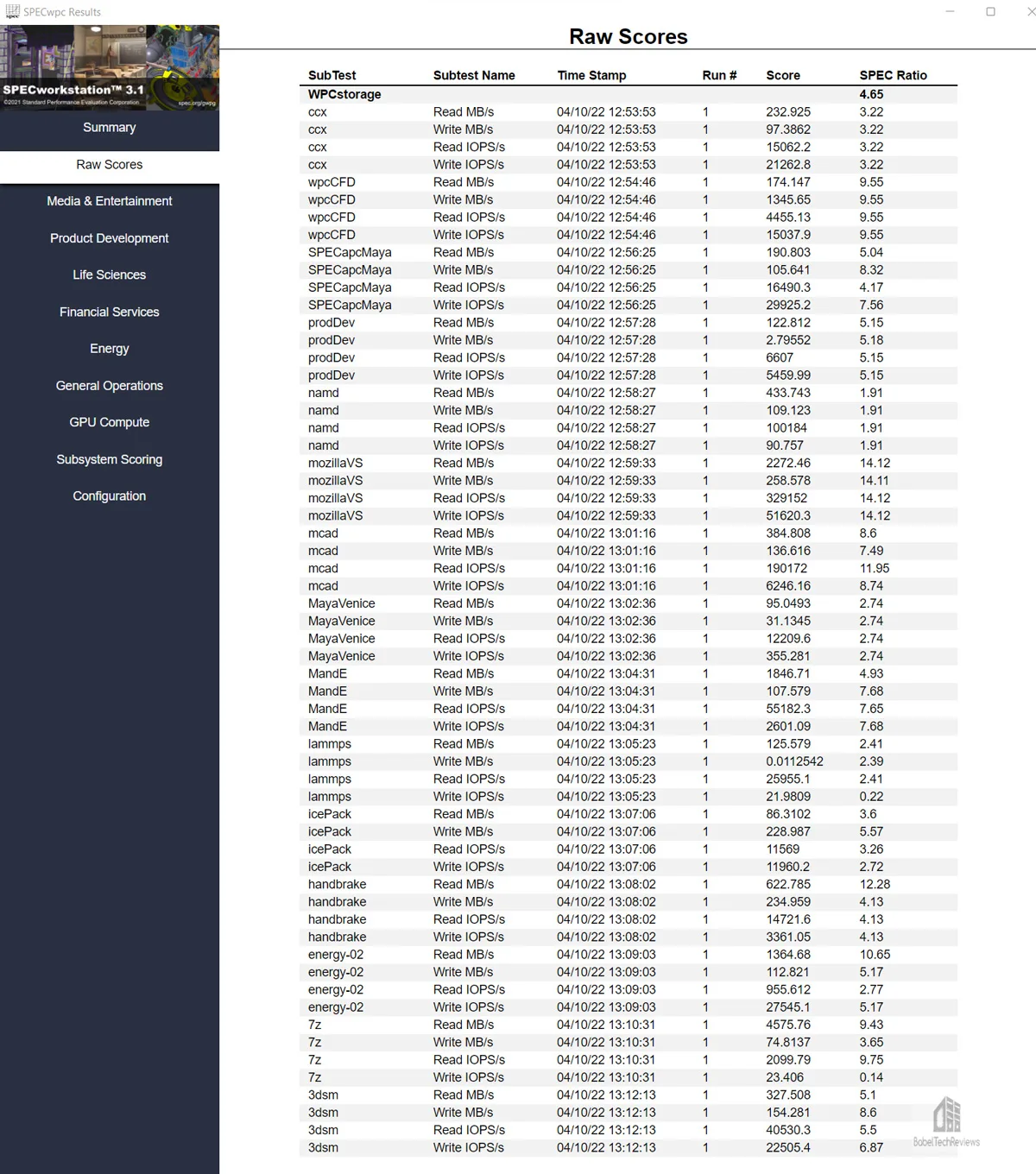
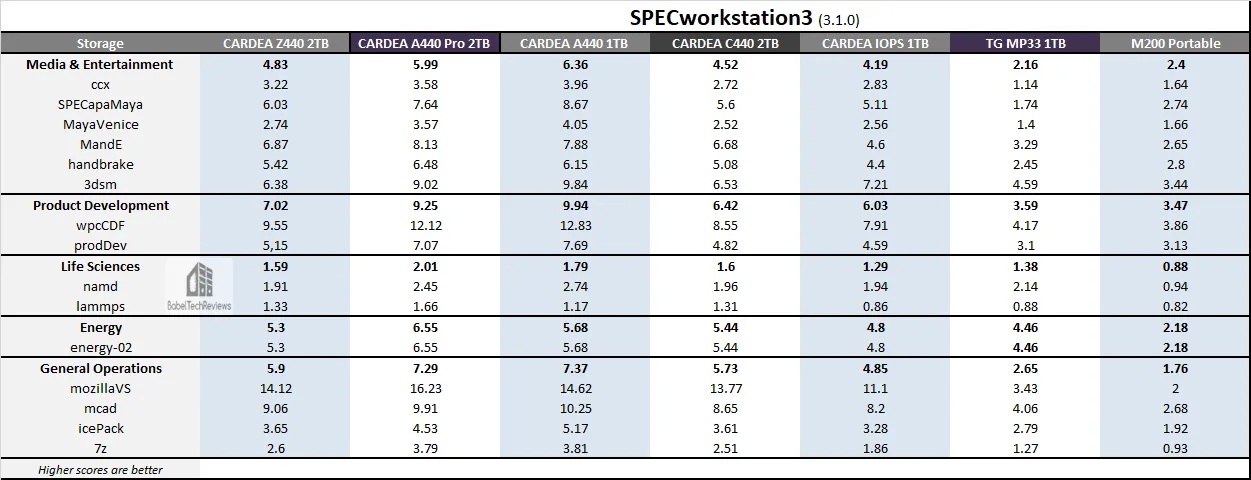
Anvil’s Storage Utilities
Anvil’s Storage Utilities is a tool designed to benchmark and evaluate the Read and Write performance of SSDs and HDDs. It gives overall bandwidth as well separate Read and Write scores, the response times, and IOPS capabilities.

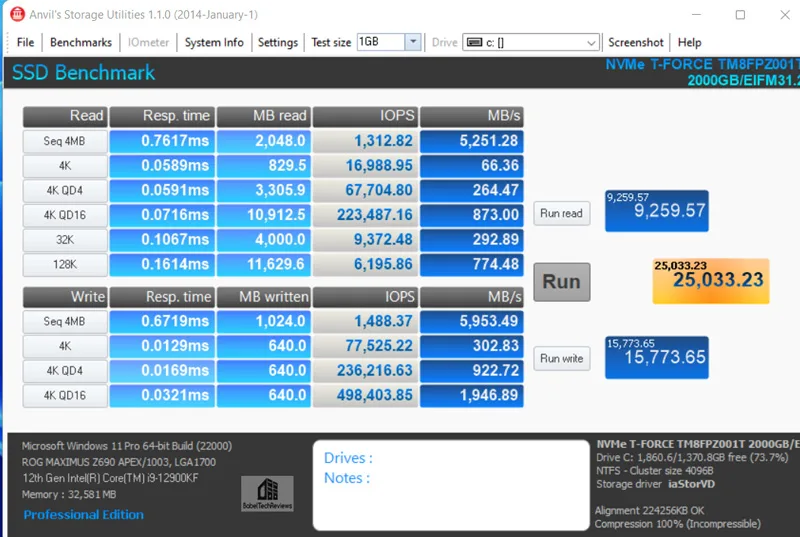
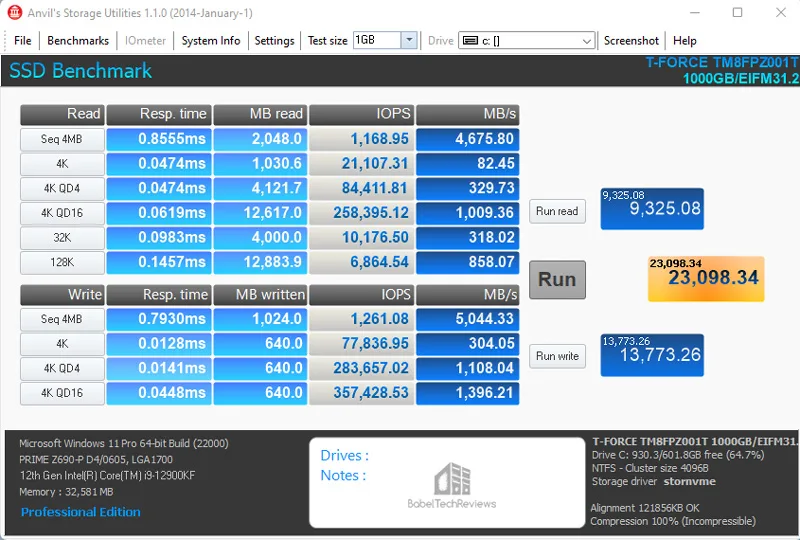
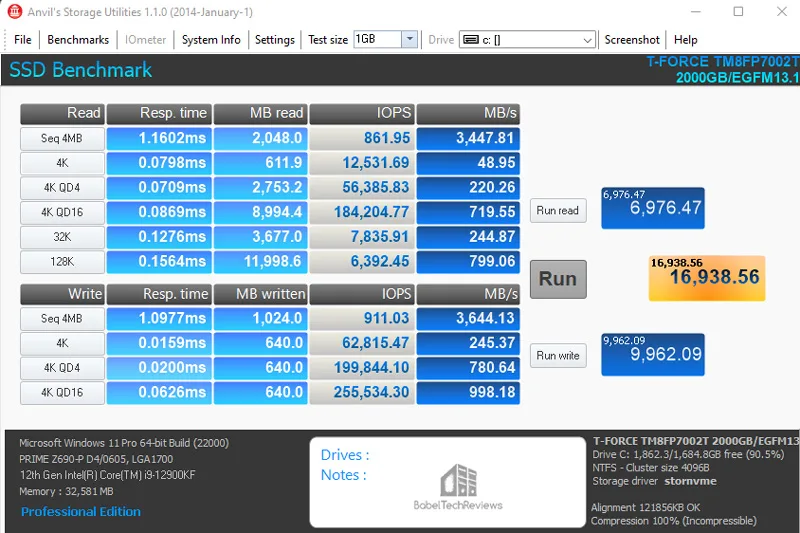

CrystalDiskMark 8.0.4
CrystalDiskMark is a HDD benchmark utility for your drives that measure sequential and random read/write speeds. Here are some key features of “CrystalDiskMark”:
- Measure sequential reads/writes speed
- Measure random 512KB, 4KB, 4KB (Queue Depth=32) reads/writes speed
- Results given in IOPS or MB/s
First up is the CARDEA ZERO Z440 and notice that it doesn’t quite meet its Read speed advertised specifications of 5,000MBps/4,400MBps. It appears that SSD manufacturers use an empty second drive for their testing whereas BTR does real world testing on primary drives that are in use with Windows 11 installed.
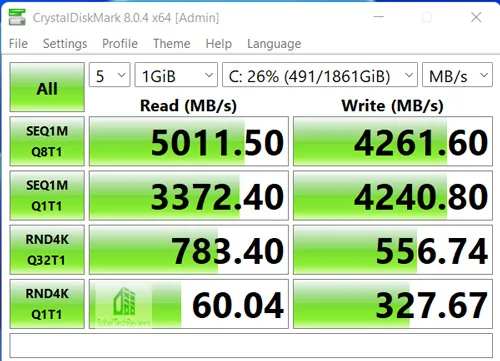

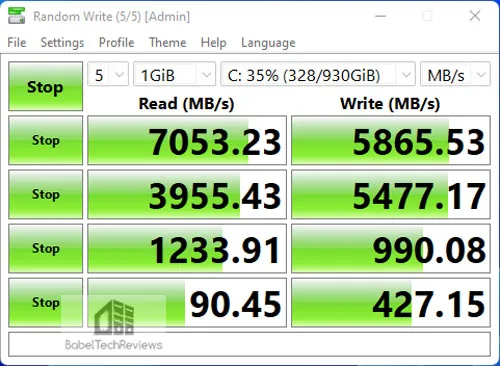
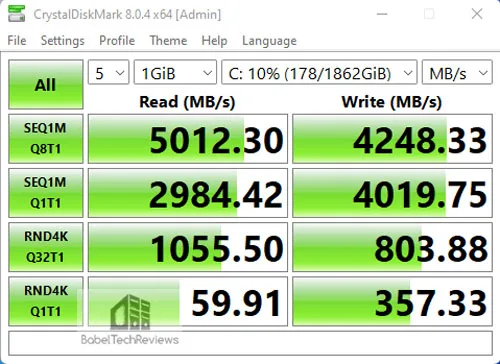

TxBENCH
TxBENCH is similar to CrystalDiskMark but with additional features including secure erase. According to the website, “It not only measures the performance of storage easily but also performs detailed speed measurements based on specified access patterns and long-period speed measurements. It also allows you to see each drive’s supported features, enabled features, and S.M.A.R.T. information.”
First, the CARDEA ZERO Z440.
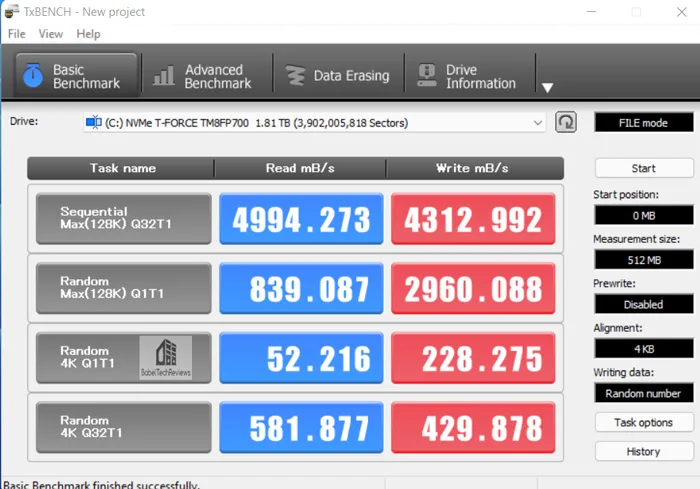
Next up, the A440 Pro Special Series SSD. 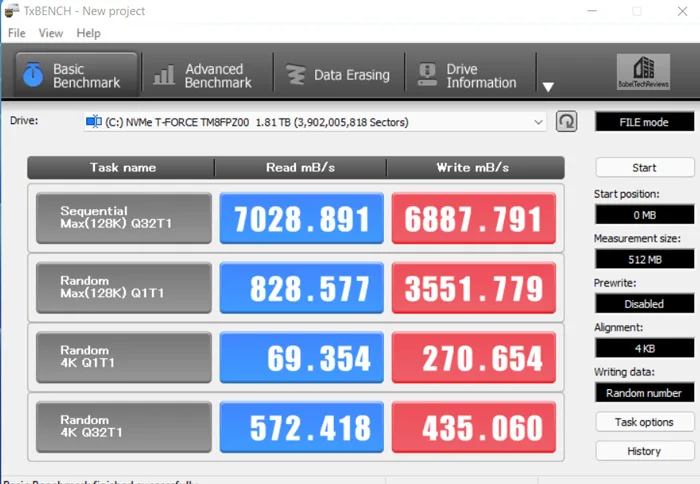 The A440 results are below.
The A440 results are below.
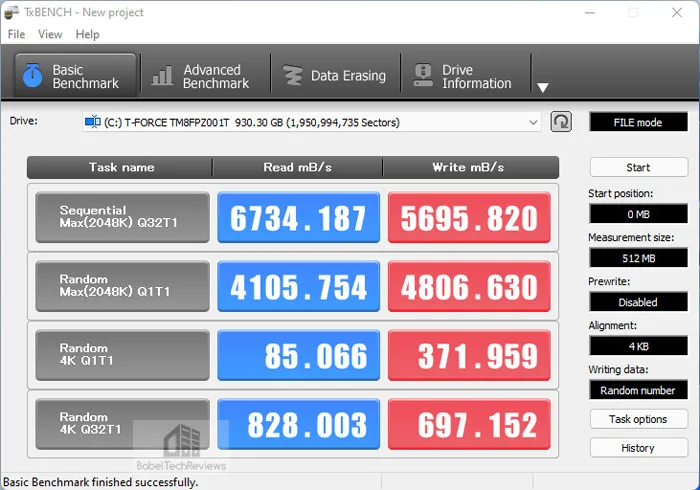 Finally, the CARDEA Ceramic C440 results.
Finally, the CARDEA Ceramic C440 results. 
 The results are very similar to the CrystalDiskMark benchmarks but with the CARDEA ZERO Z440 edging out the C440.
The results are very similar to the CrystalDiskMark benchmarks but with the CARDEA ZERO Z440 edging out the C440.HD Tune
This free standalone synthetic test is old and it doesn’t represent real world performance but it does test some important drive metrics. There is also a pay-for HD Tune Pro which is up-to-date and offers more functionality. We tried the Pro trial recently just to make sure the free version is still relevant. HD Tune has the following functions, and it measures the performance of:
- Transfer Rate
- Access Time
- CPU Usage
- Burst Rate
- Random Access test
- Write benchmark
Hard Disk information includes partition information, supported features, firmware version, serial number, disk capacity, buffer size, transfer mode.
- Hard Disk Health
- S.M.A.R.T. Information (Self-Monitoring Analysis and Reporting Technology)
- Power On Time
- Error scan
- Temperature display
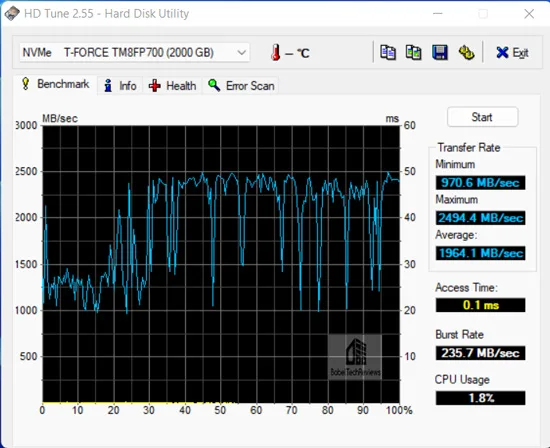

Next, we benchmark using AS SSD.
AS SSD
AS SSD is designed for Solid State Drives (SSD). This tool contains synthetic and practice tests. The synthetic tests determine the sequential and random read and write performance of the SSD without using operating system caches. In Seq-test the program measures how long it takes to read and write a 1GB file.
In the 4K test, read and write performance for random 4K blocks are determined. The 4K-64-thrd test are similar to the 4K procedure except that the read and write operations on 64 threads are distributed as in the usual start of a program. For the copy test, two large ISO file folders are created, programs with many small files, and a games folder with small and large files. These three folders are copied by the OS copy command with the cache turned on. AS SSD gives an overall score after it runs the benchmarks.
First up is the CARDEA ZERO Z440 with the results in MB/s next to IOPS, and below them, the copy speeds.

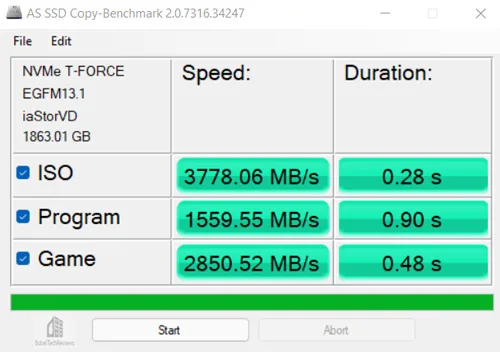
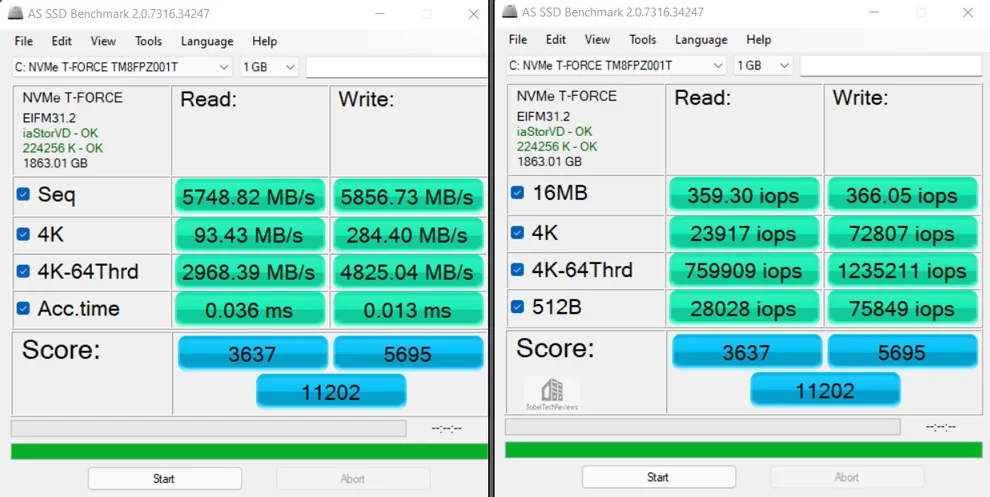
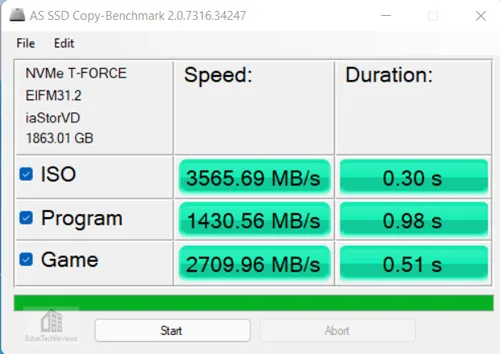
Next up are the T-FORCE CARDEA A440 AS SSD results. 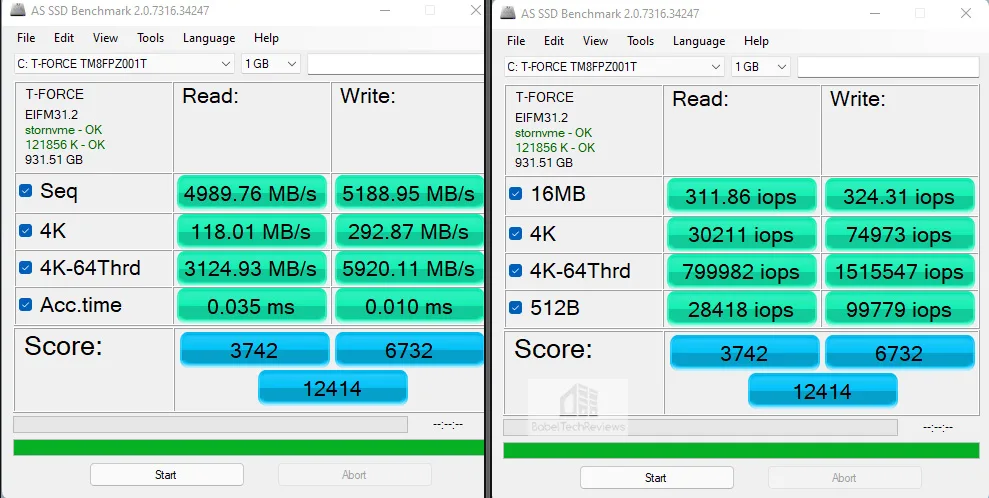
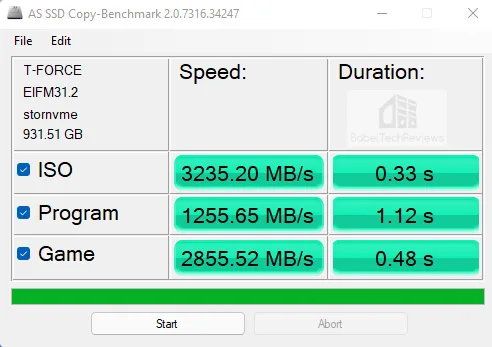 Finally, the T-FORCE CARDEA Ceramic C440AS SSD results.
Finally, the T-FORCE CARDEA Ceramic C440AS SSD results. 


Although the CARDEA ZERO Z440 has the fastest game copy time, both of the CARDEA A440 SSDs are first in Read/Write with the CARDEA ZERO Z440 ahead of the CARDEA C440, followed by the IOPS, the MP33, the portable, and finally the Delta MAX.
HD Tach is up next.
HD Tach
HD Tach is a low level hardware benchmark for random access read/write storage devices that was developed by Simpli Software. HD Tach uses custom device drivers and low level Windows interfaces to determine the physical performance of the device. It is no longer supported and needs to be run in compatibility mode for Windows 10.
We present the benchmarks first with the Quick benchmark (8MB zones) on the left and the Long benchmark (32MB zones) on the Right.
The CARDEA ZERO Z440 gives an average read of 2332.5MB/s for the Quick bench and 2174.1MB/s for the Long bench.

Below are the HD Tach Disk benches summarized in a chart comparing our eight drives. For read speeds, higher is better but for access times, lower is better.

The CARDEA A440 Pro again generally scores the fastest in HD Tach ahead of the A440, although the CARDEA ZERO Z440 is ahead of the CARDEA C440 which trades blows with the vanilla A440, followed by the IOPS, then by the MP33 SSD, the portable SSD, and the SATA III Delta MAX takes last place as usual.
Next we look at game/level loading speeds.
The Game/Level Loading Timed Results – FFXIV
Game and game level loading time results are difficult to measure precisely but generally SSDs perform similarly with regard to game loading times and they all load significantly faster than any HDD. Even SSHDs require loading the same level or program over-and-over to get quicker. We tested 5 levels and overall loading times accurately by using the Final Fantasy XIV: Stormbringer & Endwalker benchmarks.
Shadowbringers Benchmark
The Shadowbringers Benchmark will not only give you accurate framerates averages, it precisely times how long it takes to load each of 5 different levels and the total loading time. We used maximum settings.
Let’s start with the Shadowbringer benchmark using the CARDEA ZERO Z440. Total Loading times are 9.5555 seconds.  Here’s the Shadowbringer summary chart.
Here’s the Shadowbringer summary chart.

The CARDEA ZERO Z440 trades blows with the PCIe 3.0 IOPS and is slightly slower than the C440 which in turn are well behind the A440 SSDs.
We also use the newer Endwalker benchmark.
Endwalker Benchmark
The Endwalker benchmark is just as detailed as Shadowbringers and is a very accurate test of loading game and level times.
We test using the Endwalker benchmark with the CARDEA ZERO Z440. Total Loading times are 9.376 seconds. 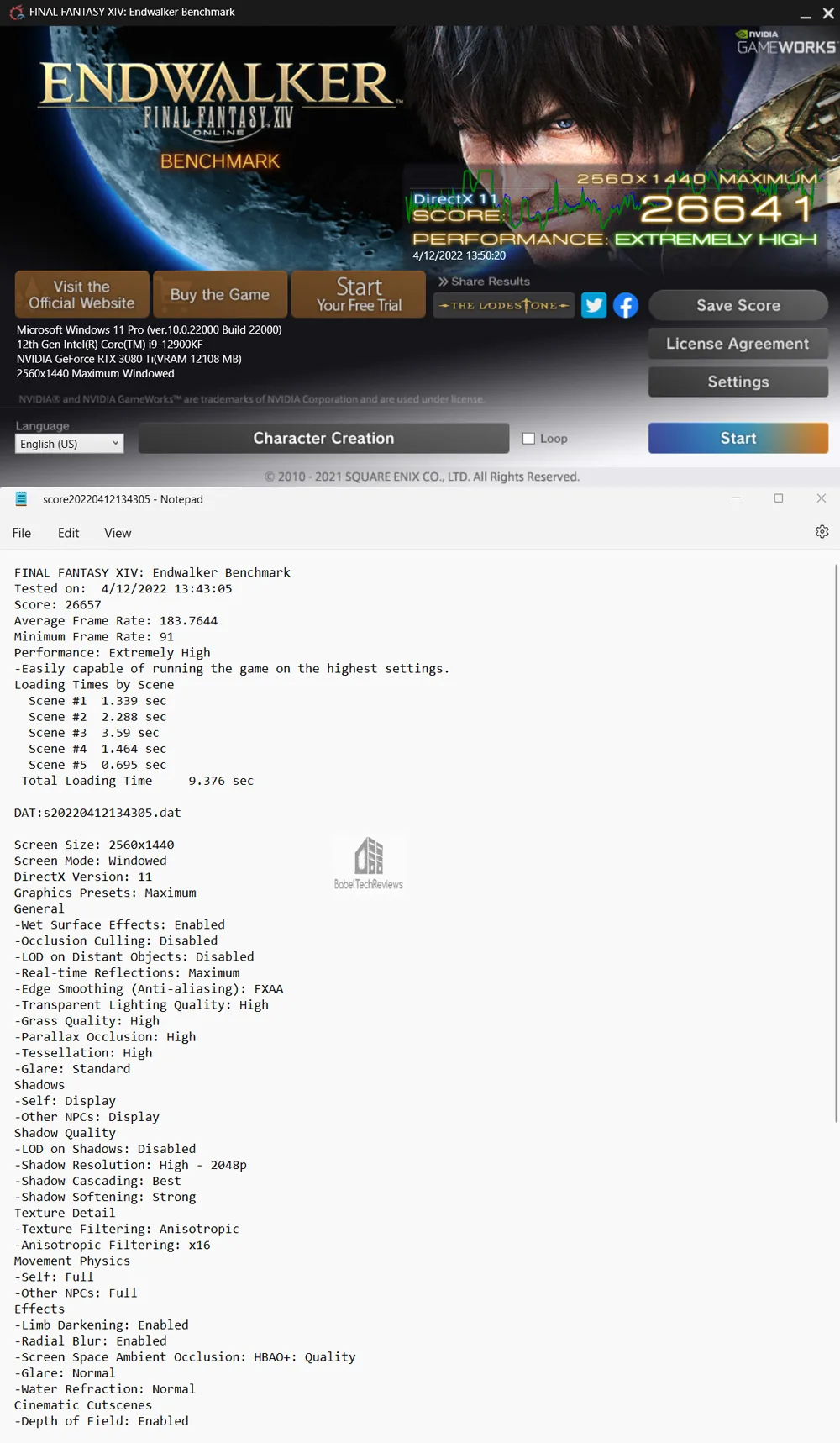 Here is the Endwalker summary chart..
Here is the Endwalker summary chart..

For all 4 games and from multiple levels tested, both CARDEA A440s stand out, followed generally by the CARDEA ZERO Z440 and C440, the IOPS, the MP33, the Delta MAX, and then the USB 3.2 Type C portable SSD.
We see a 2-3 second difference between our fastest SSD and our slowest SATA III SSD with an additional second required to load from an external drive. It may make an immersion difference for getting right back into the game. However, until developers start to target SSDs for PC game storage, only then we may see SSDs fully achieve the game loading performance they are capable of on Windows. In the meantime, PS5 gamers can take full advantage of either A440’s fast loading speeds. No matter what, faster is better when a gamer wants to get right back into a game.
Lets look at file copy speeds next.
File Copy 104GB
File copy speeds are important to gamers especially when they want to quickly transfer their game files from one location to another. We copy a 104GB folder containing Horizon 5 from its Steam folder to a desktop folder which is something we do regularly when setting up Steam games on multiple PCs. Pay careful attention to the charts (in green) that show the consistency and speed of file copies. They tend to show the ups and downs where each SSD runs out of cache and how long it takes to empty and refill it.
104GB File Copy
CARDEA ZERO Z440 took 1 minutes and 39.0 seconds. to copy 104GB.
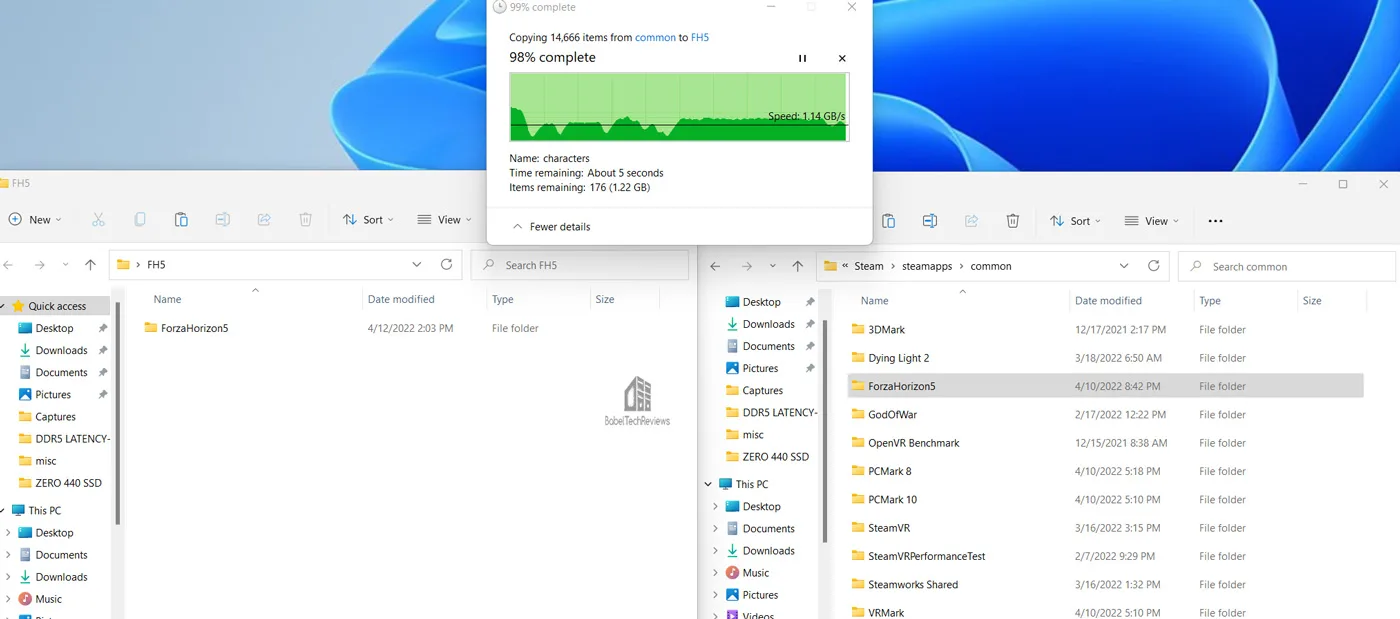
The A440 Pro Speciall Series SSD took 1 minutes and 17.0 seconds. to copy 104GB. 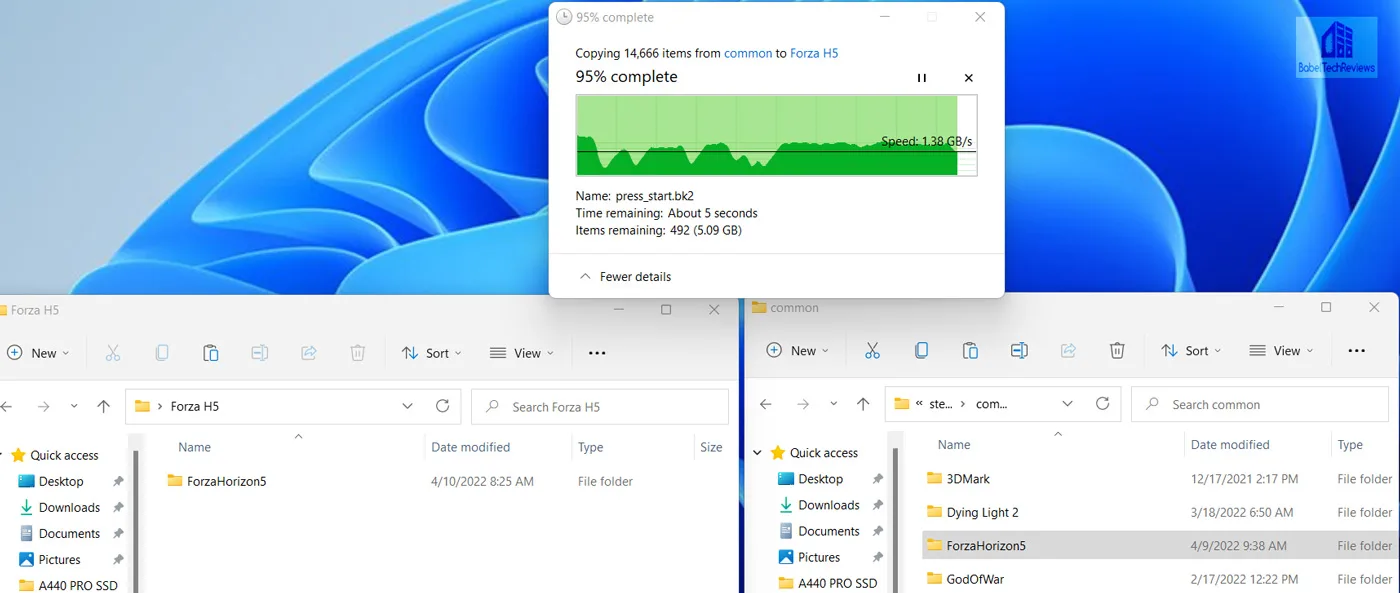 The A440 took 1 minutes and 44.0 seconds to copy 104GB.
The A440 took 1 minutes and 44.0 seconds to copy 104GB.  The Ceramic C440 took 1 minutes and 59 seconds for the same copy.
The Ceramic C440 took 1 minutes and 59 seconds for the same copy.
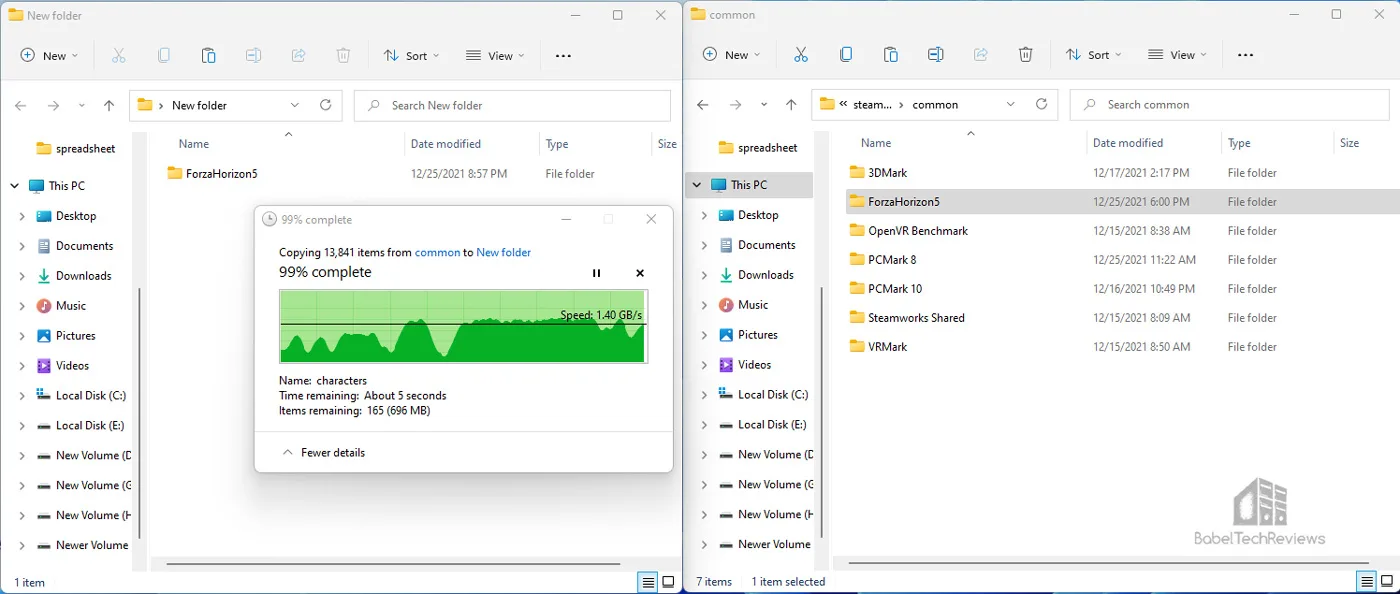

The CARDEA A440 Pro Special Series SSD excels at copying well ahead of the three other Gen 4 x4 SSDs with the CARDEA ZERO Z440 beating the vanilla A440 and the C440. The IOPS comes in fourth place well ahead of the MP200 portable and MP33 SSDs which are in turn faster than the Delta MAX SATA III SSD.
Yet no matter how you look at it, even a SATA III SSD is much faster than any HDD or SSHD for copying large files. Consider taking a nap if you are going to copy 104GB using a hard drive.
Finally, let’s revisit game/level loading times plus all of our Summary charts and then reach our conclusion.
Summary Charts and Conclusion
Here are all of the gaming and summary charts again for easy reference followed by our conclusion.
The Game/Level Loading Time Results
Game and game level loading time results are difficult to measure precisely (such as by using a stopwatch) but our tests are far more consistent. Here are the World of Warcraft and Battlefield 3 loading times again as measured precisely by PCMark 8’s storage test and accurately by Final Fantasy XIV: Stormbringer/Endwalker’s benchmarks. Lower (quicker/faster) loading times (measured in seconds) are better.

PCMark’s Storage Benchmark also provides precise SSD bandwidth, loading times, game record, install, and save time comparisons.

All eight SSDs load games quickly but the Generation 4 x4 PCIe SSDs are generally faster than Generation 3 x4 and stand out from SATA III and external SSDs. When PC game developers start to target SSDs for game storage, only then may we see SSDs achieve the super-fast game loading performance they are capable of. Until then, PlayStation 5 gamers may take full advantage of the CARDEA ZERO Z440 and other PCIe 4.0 fast SSD loading speeds.
Non-Gaming Summary Charts
Here are all of the summary charts presented again in one place.












 A gamer who wishes to have the very fastest PC will choose an internal PCIe 4.0 Gen 4 x4 NVMe SSD, and both CARDEA Ceramic A440 SSDs stand out as the fastest drives, and noticeably faster than the CARDEA C440 and CARDEA ZERO Z440 SSDs. The CARDEA IOPS slots into fifth place well ahead of the TeamGroup MP33 or M200 Portable SSDs, and finally the Delta MAX SATA III SSD is almost always in last place.
A gamer who wishes to have the very fastest PC will choose an internal PCIe 4.0 Gen 4 x4 NVMe SSD, and both CARDEA Ceramic A440 SSDs stand out as the fastest drives, and noticeably faster than the CARDEA C440 and CARDEA ZERO Z440 SSDs. The CARDEA IOPS slots into fifth place well ahead of the TeamGroup MP33 or M200 Portable SSDs, and finally the Delta MAX SATA III SSD is almost always in last place.
For gaming and for regular tasks on current Intel platforms, any SSD will provide decent game and level loading performance well above that of mechanical hard drives or even hybrid (SSHD)drives, but a PCIe 4.0 NVMe Gen 4 x4 will provide the highest performance. Let’s head for our conclusion.
The Conclusion & Verdict
We would suggest that 1TB has become the minimum storage capacity for a gamer that includes the operating system since PC games have grown very large although 512GB may be acceptable. It is not absolutely mandatory to have a SSD if you only use your PC for gaming and have a ton of patience. Games usually do not perform significantly better on SSDs since most PC developers still target HDDs for game performance optimization. However, games generally take significantly longer to load from a HDD or SSHD than they do from any internal SATA III drive or even from an external USB 3.0 SSD.
If a gamer wants to get right back into the game, any SSD will improve immersion and decrease frustration compared with using a HDD or SSHD. Windows 10/11 have become positively painful to use when installed on a mechanical or even on a hybrid solid state/hard disk drive. Indexing, Search, or Anti-malware Windows programs may saturate the bandwidth of a mechanical drive, and even downloading or updating Steam games will slow your PC to an irritating crawl. This will not happen using a SSD. And for maximum performance with the least frustration, using a PCIe NVMe SSD is the only way to fly.
Let’s recap pricing. The T-FORCE CARDEA ZERO Z440 SSD is available in 1TB and 2TB capacities, priced at Amazon at $227.99 for the 2TB version (and at $119.99 for the 1TB version). The T-FORCE CARDEA A440 Pro Special Series SSD is priced at Newegg at $287.99 for the 2TB version. The T-FORCE CARDEA A440 (vanilla) SSD is at Amazon for $299.99 for 2TB, but it comes with two heatsinks, and the 2TB CARDEA Ceramic C440 is priced at $229.99.
We believe that spending the extra money is worth it for a fast 2TB NVMe CARDEA ZERO Z440 PCIe Gen 4 x4 SSD over Gen 3 x4 as long as your motherboard supports PCIe 4.0. If not, the CARDEA IOPs is an excellent choice. The CARDEA ZERO Z440 is priced $60 less than the fastest tested 2TB SSD and is priced $2 less than the CARDEA Ceramic C440 which is in the same 5,000MBps/4,400MBps class but comes with a better heatsink. If you have an integrated NVMe motherboard heatsink, the CARDEA ZERO Z440 is a great choice.
Of course, gamers on a budget should also look for sales. Because of today’s close pricing and competition, choosing an SSD is easier than ever. Based on performance and price, we recommend the T-FORCE CARDEA ZERO Z440 SSD as a competitively-priced fast SSD.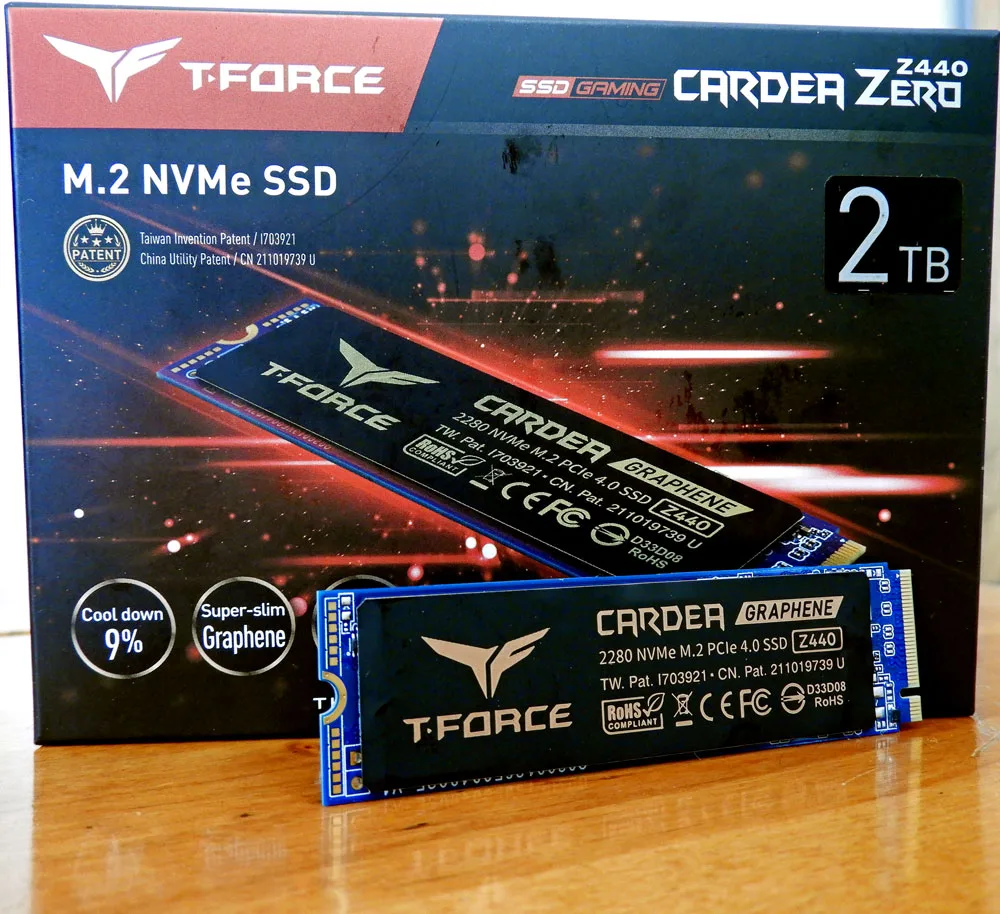 A five year warranty backed by TeamGroup insures that a player will enjoy fast performance for years to come.
A five year warranty backed by TeamGroup insures that a player will enjoy fast performance for years to come.
Pros
-
- 5-year warranty backed by TeamGroup support
- Fast game/level loading speeds and very fast large file copy speeds
- Fast Write and Read speeds
- The CARDEA ZERO Z440 is priced competitively $60 less than the fastest A440 SSDs, and not too much higher than slower Gen 4 x3 SSDs
- Thin foil copper-graphene heatsink fits under integrated motherboard NVMe heatsinks
Cons
- The included graphene heatsink is inadequate to prevent throttling under heavy load. Use an aftermarket or integrated MB heatsink
- No proprietary disk monitoring utilities. It is necessary to use third-party tools to monitor health and usage

Next up, a VR review of the RX 6650 XT and RX 6700 XT versus the RTX 3060 Ti. It will be followed up by a budget mini-PC (book sized) ECS LIVA A300 review.
Happy Gaming!
